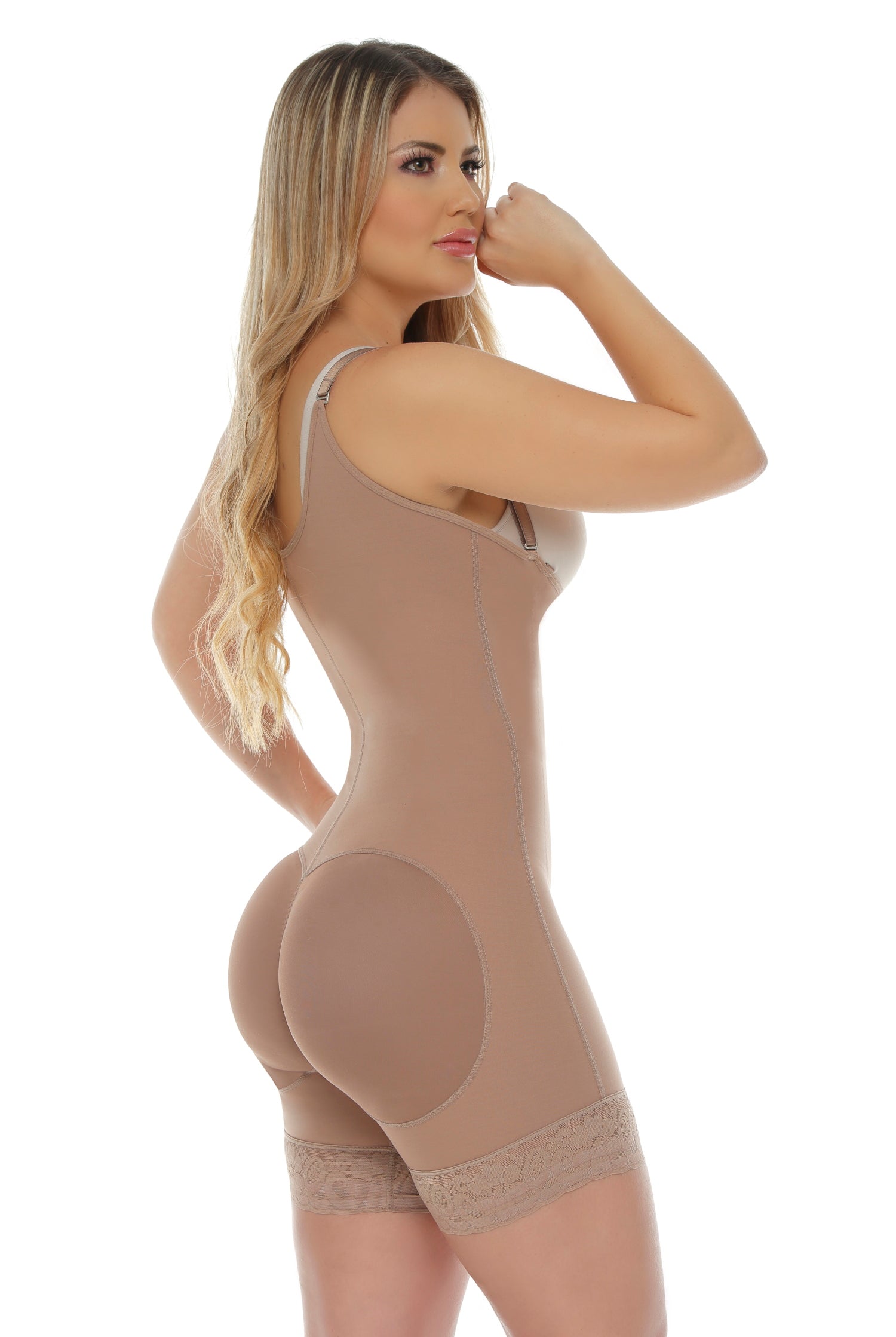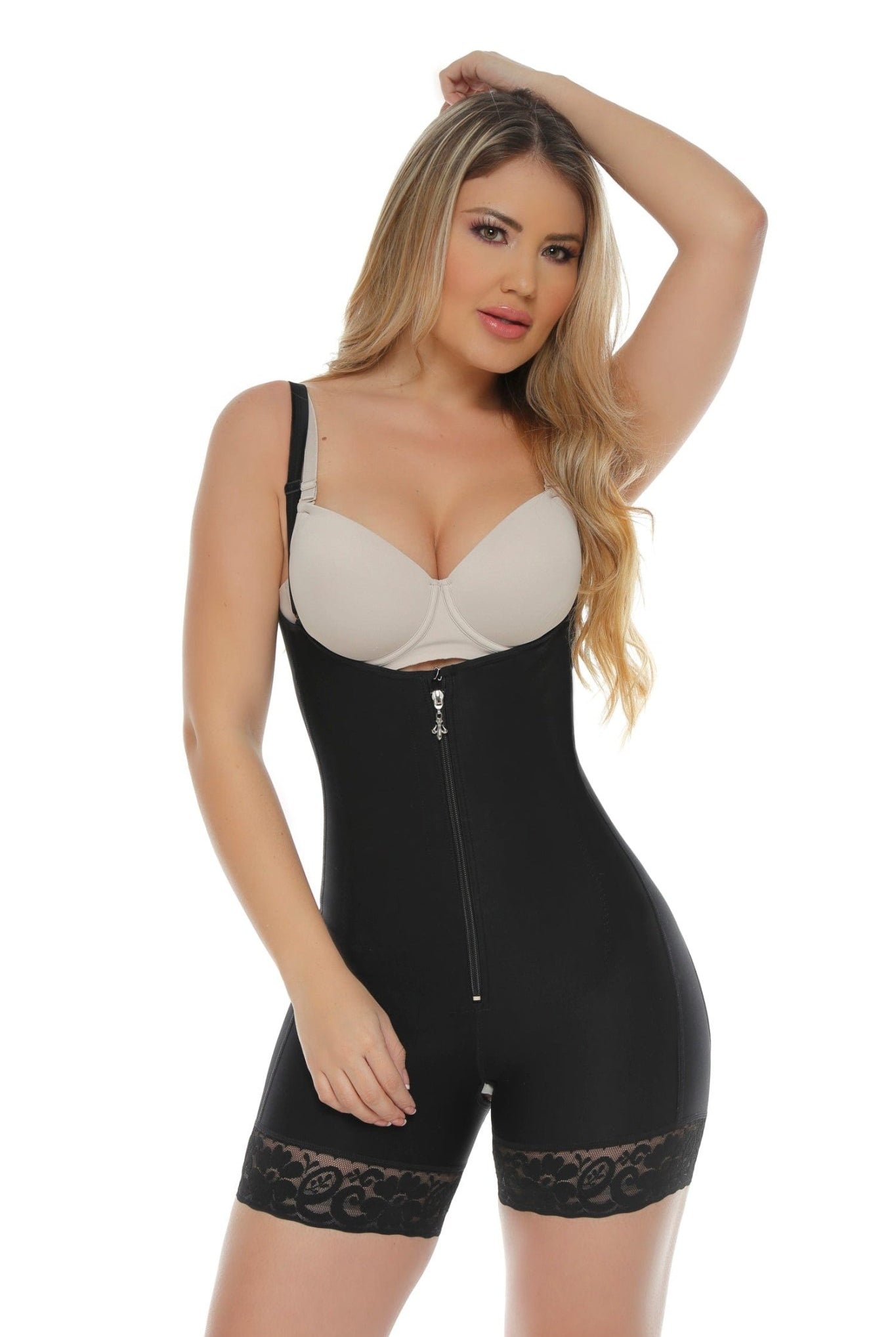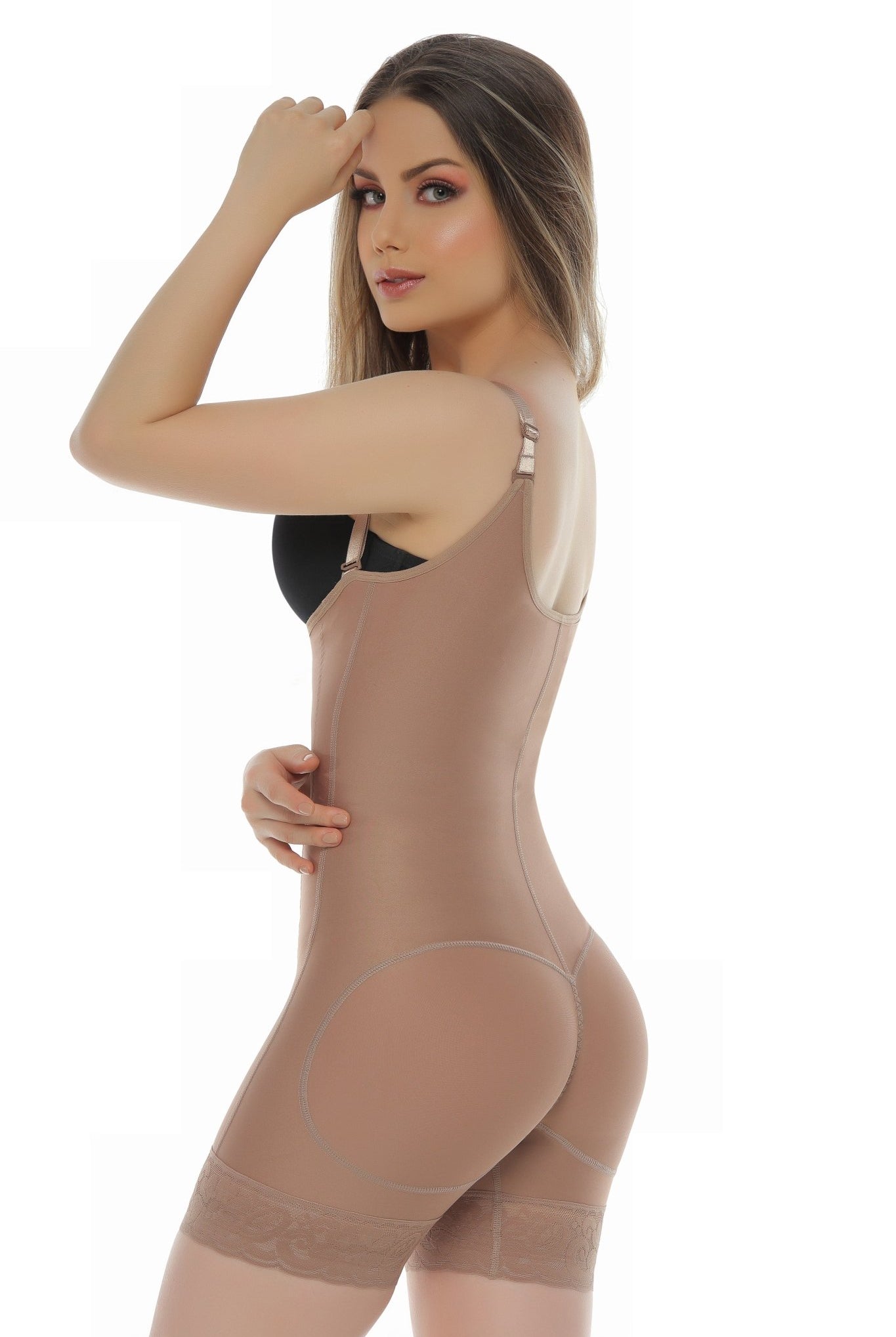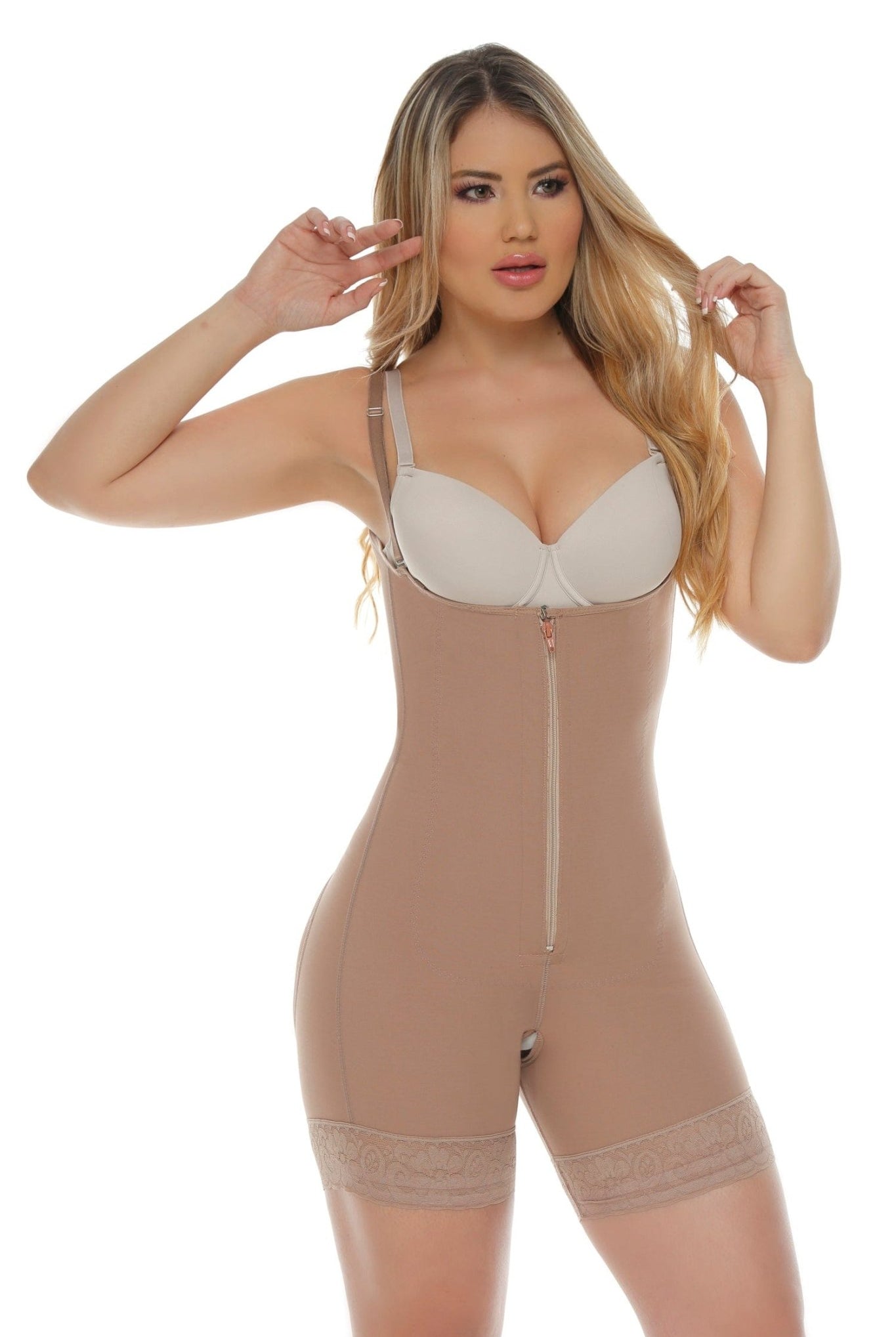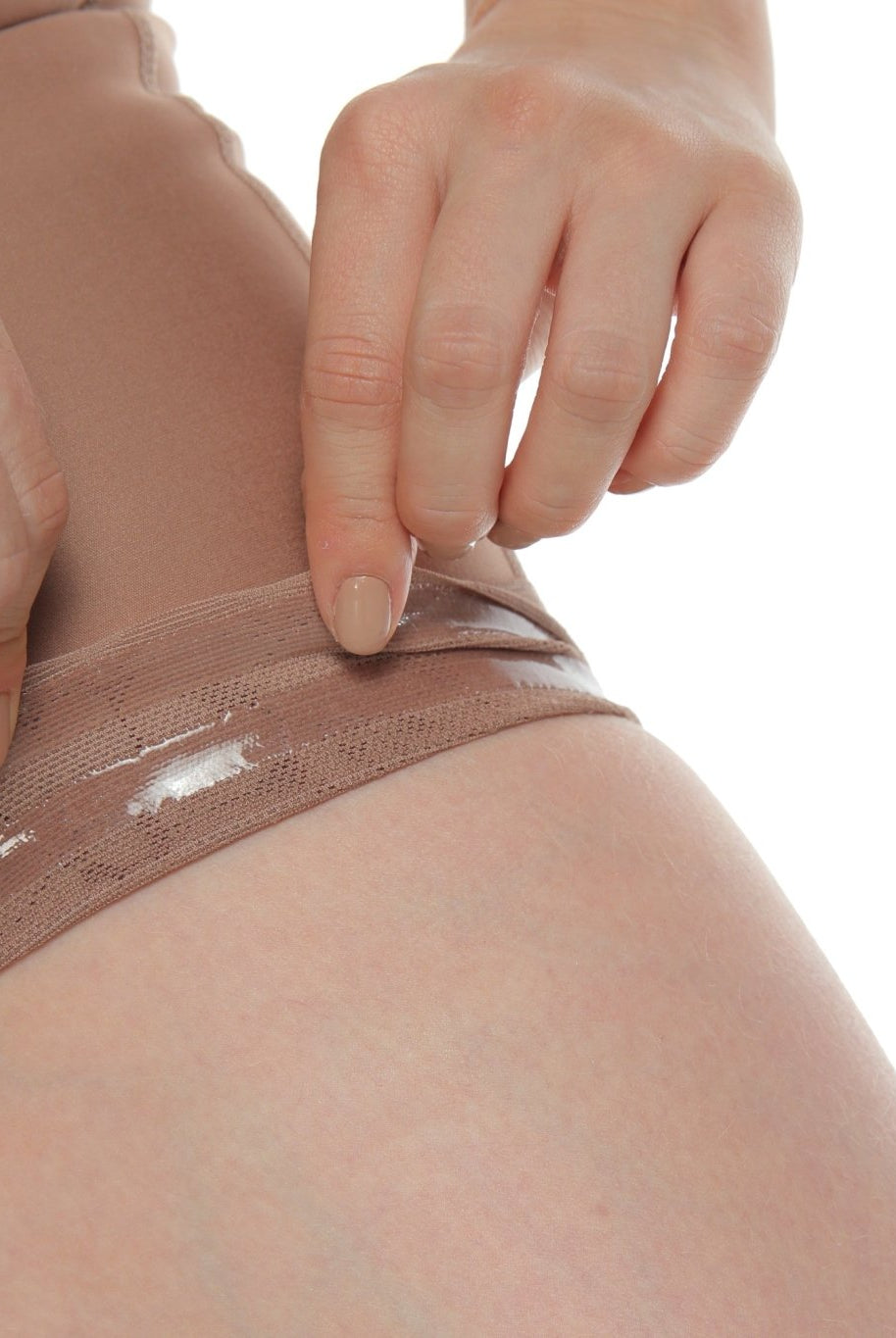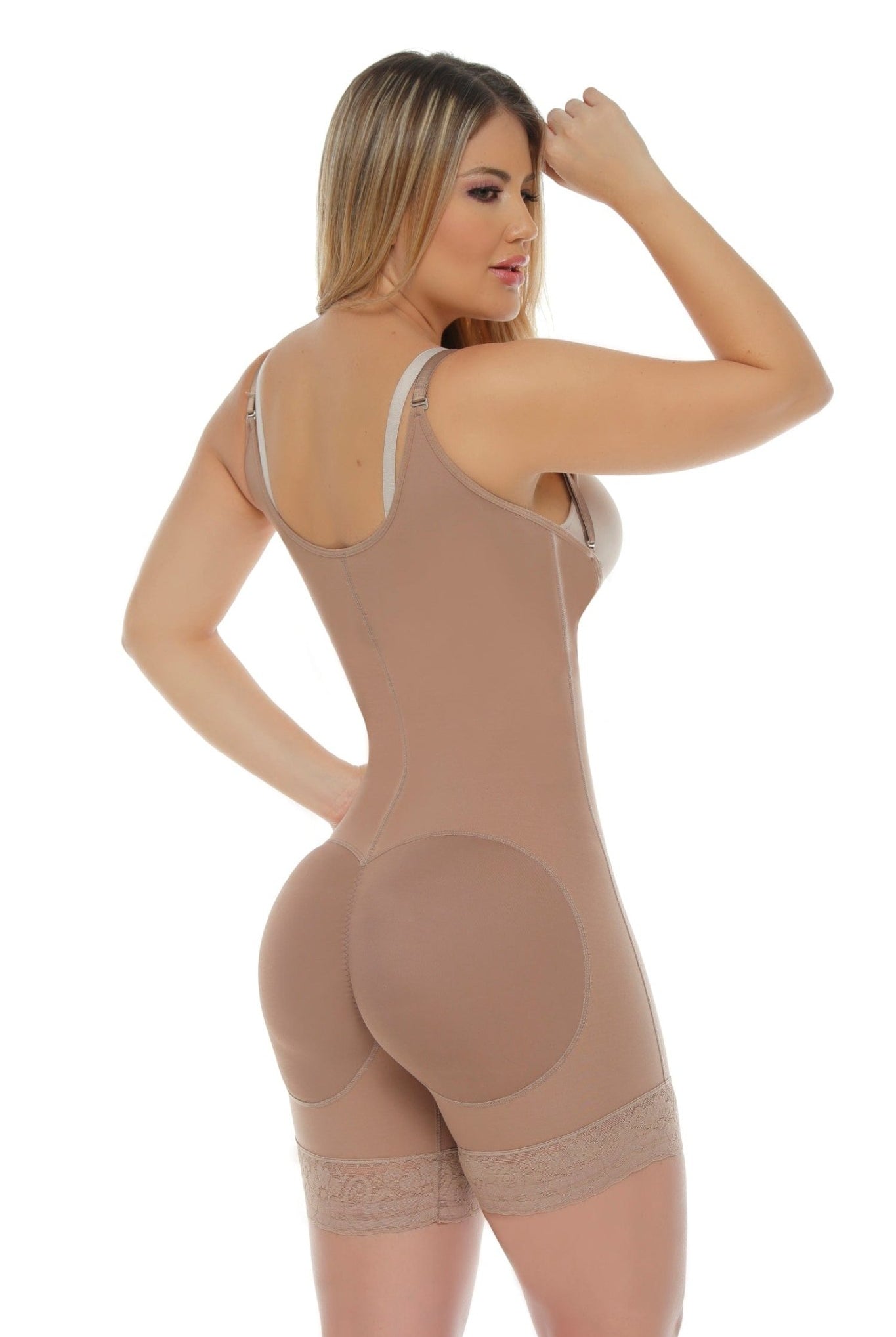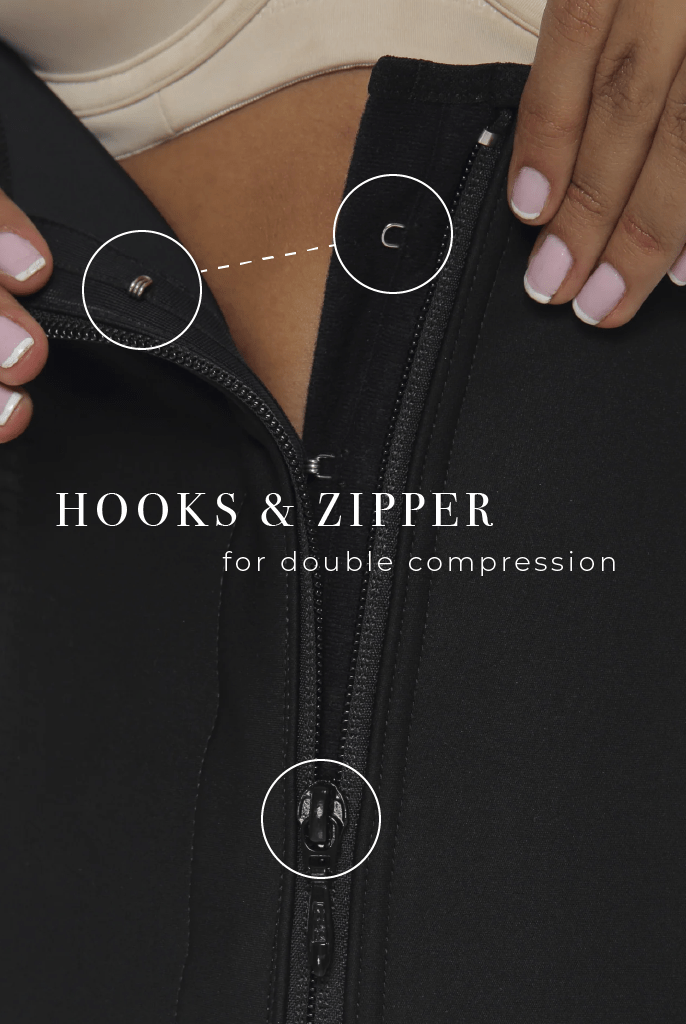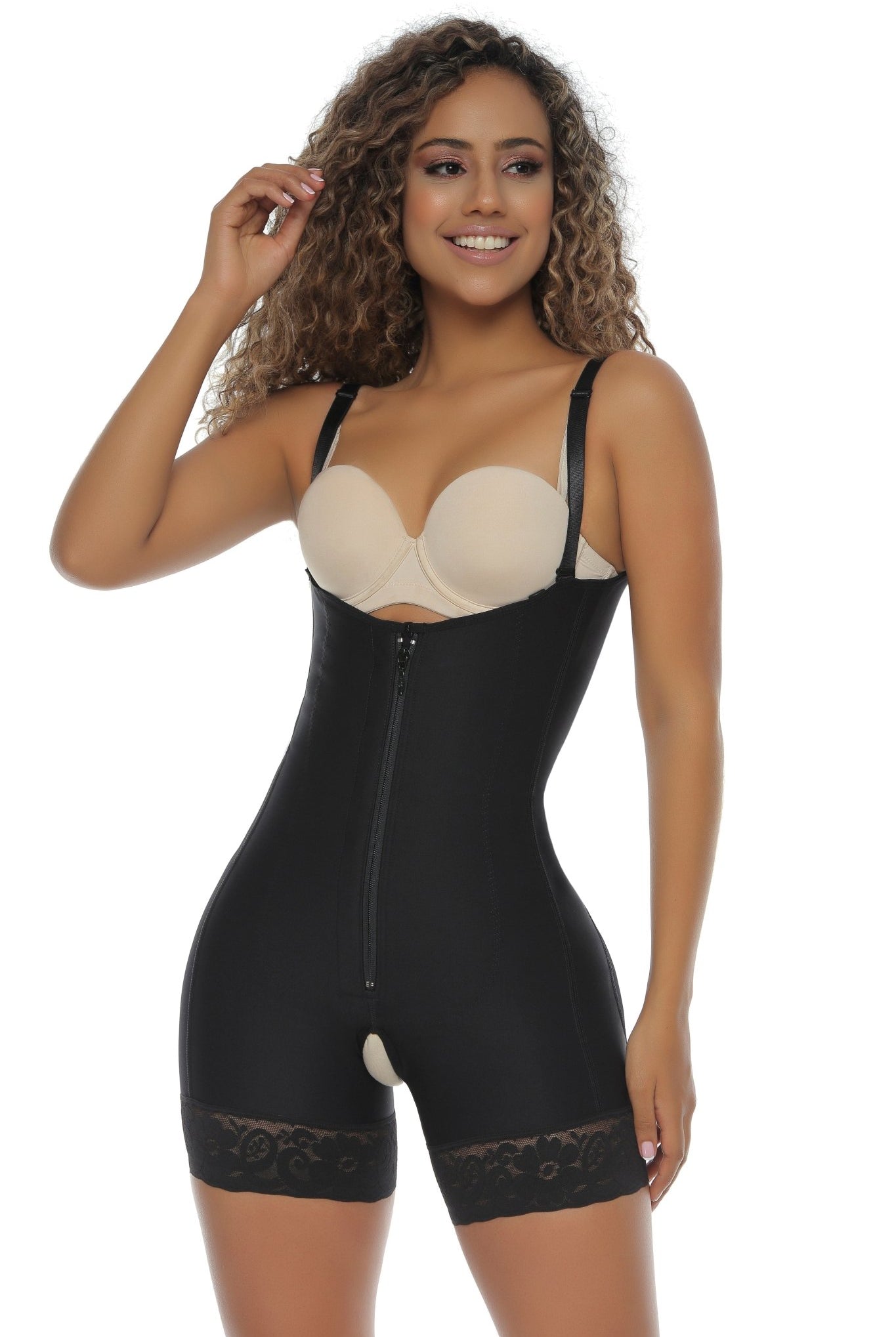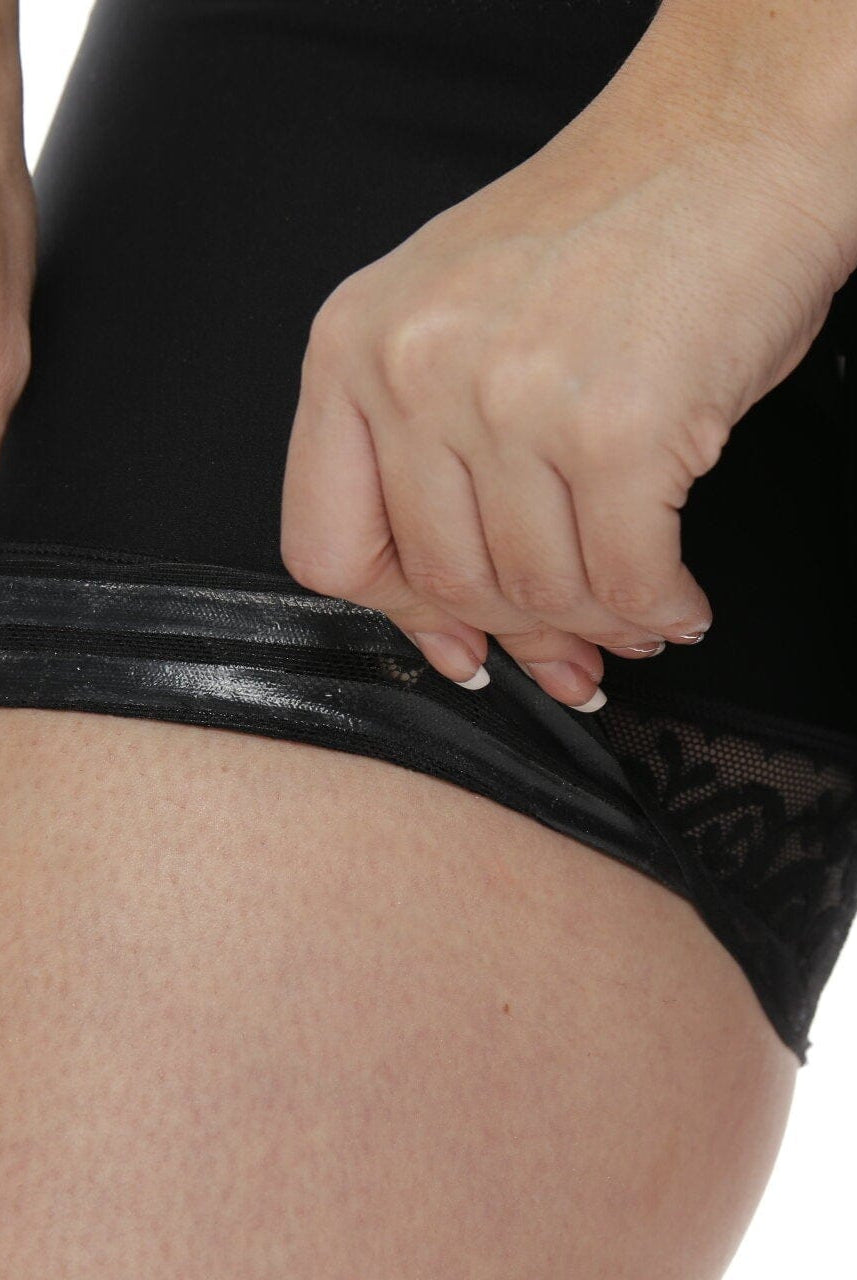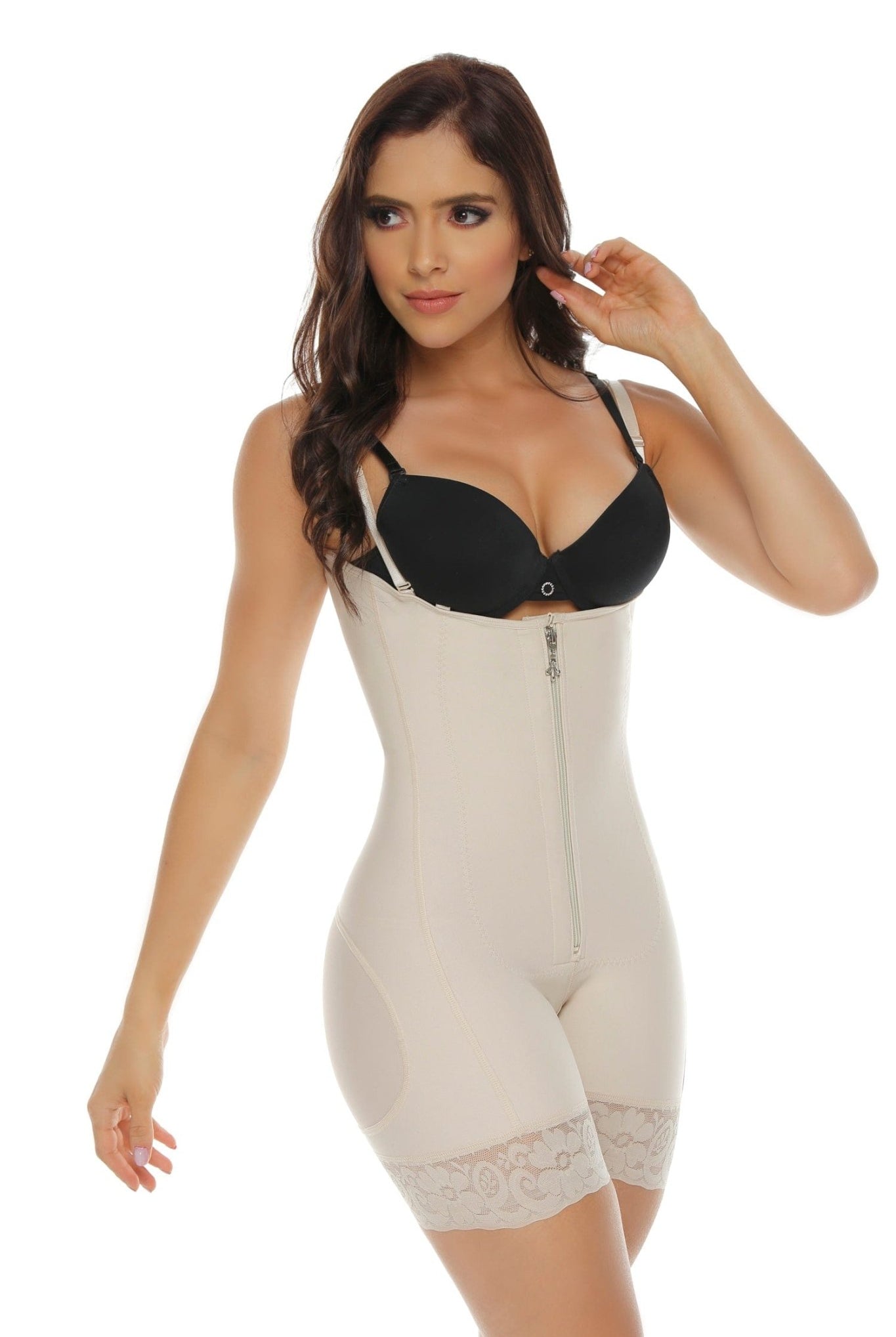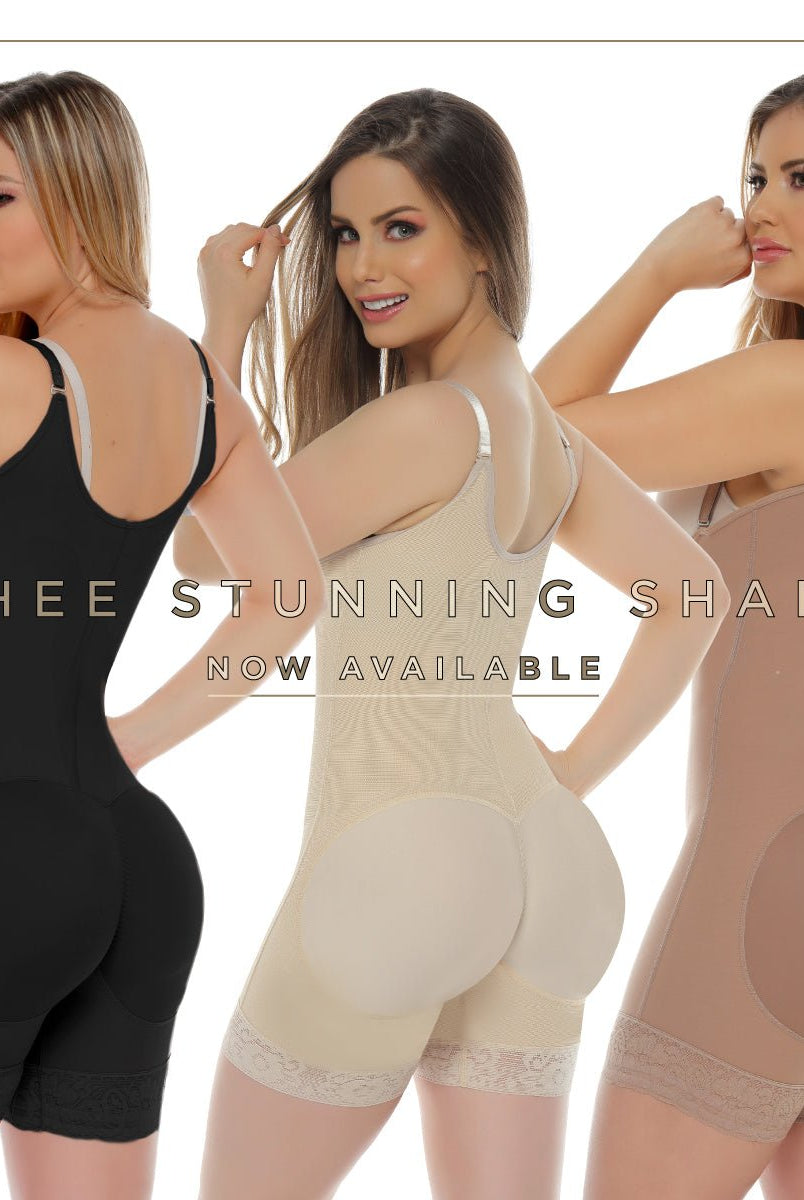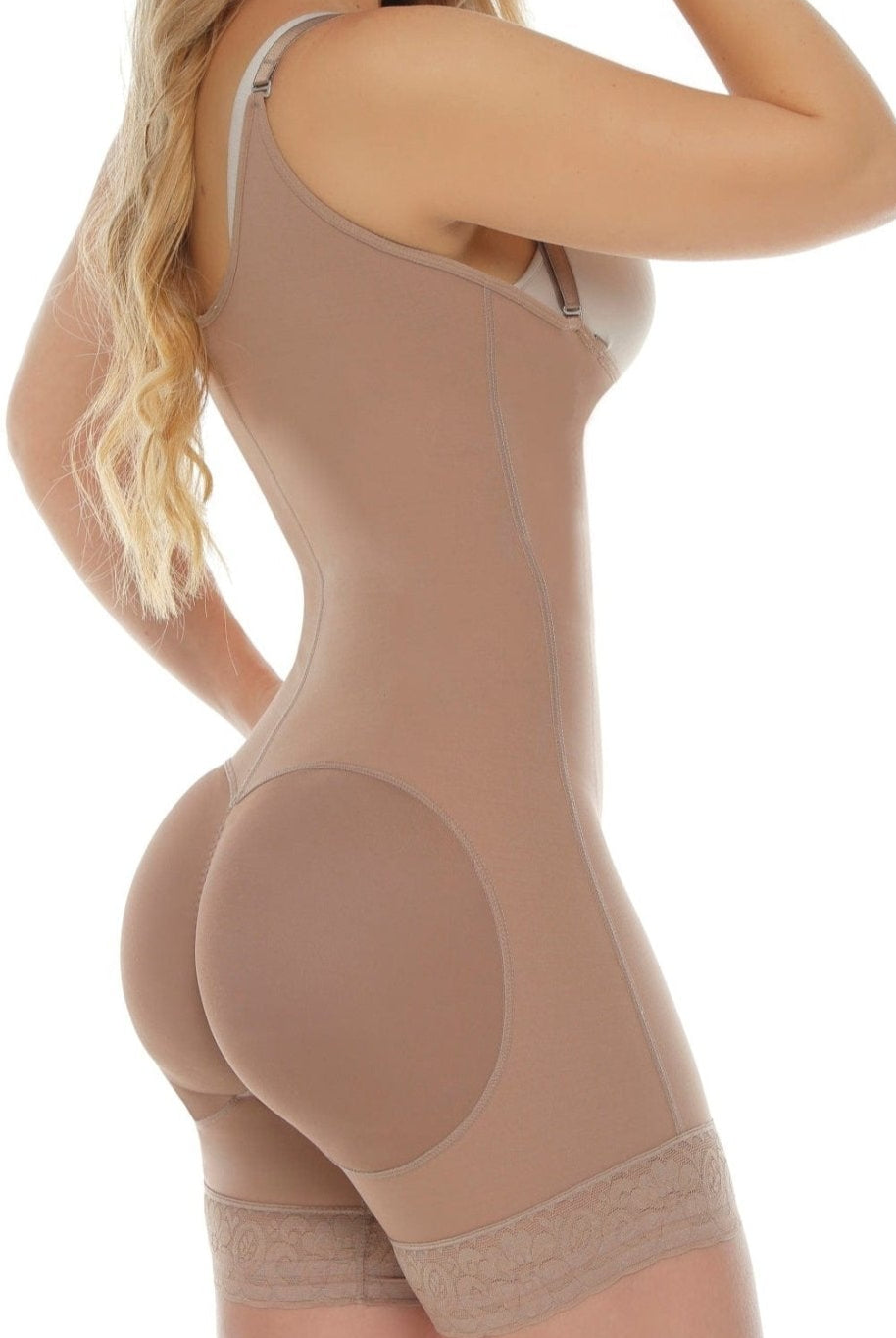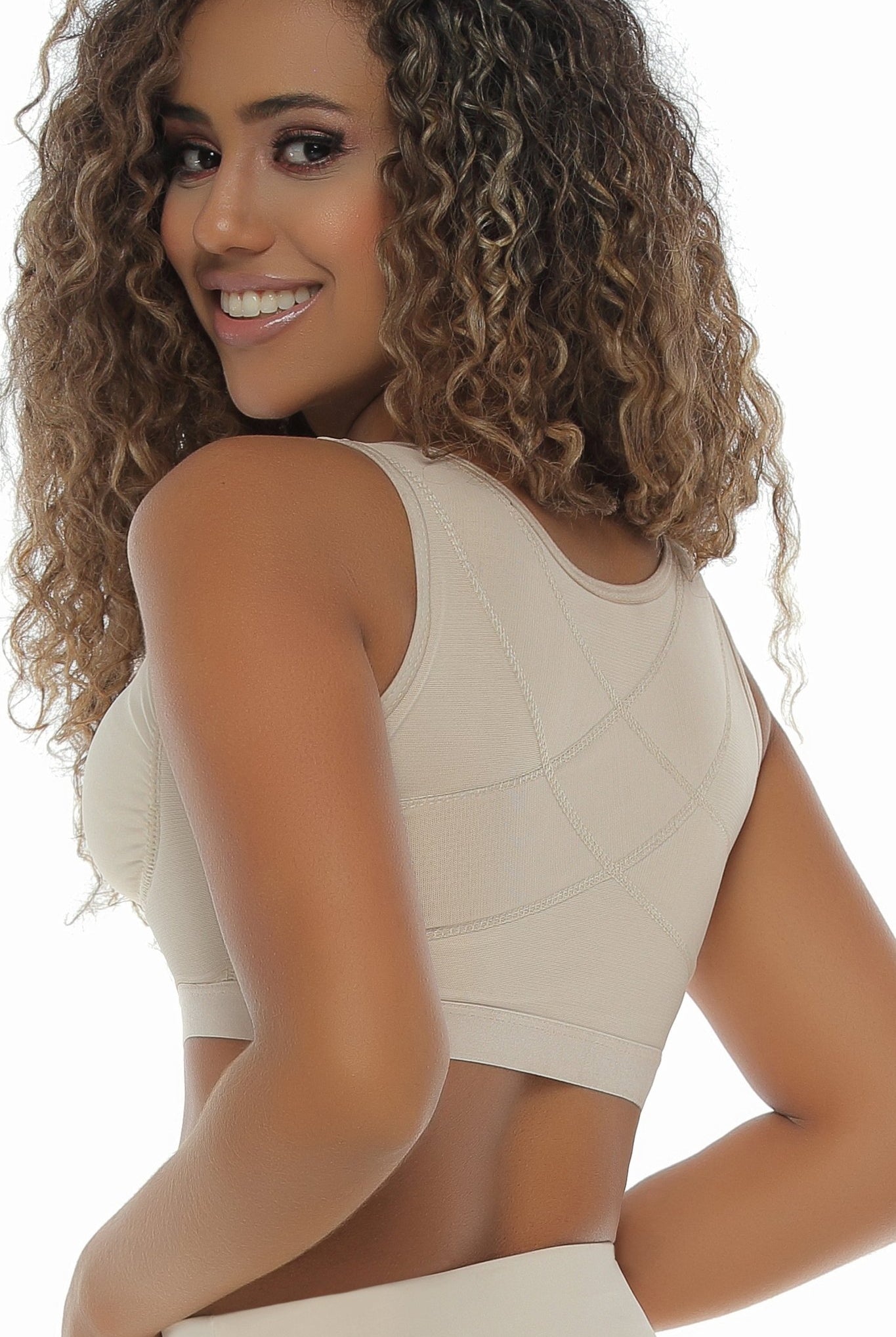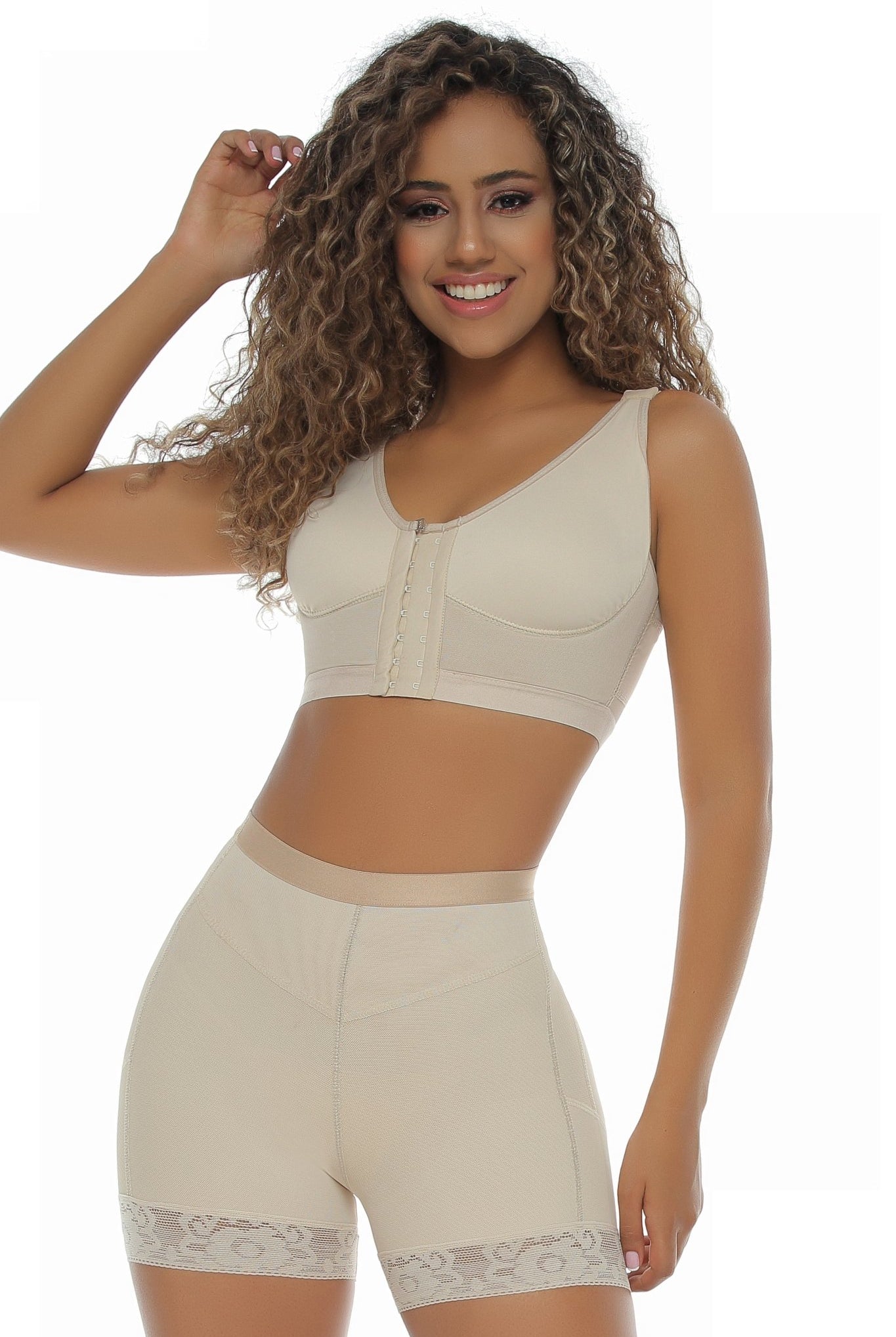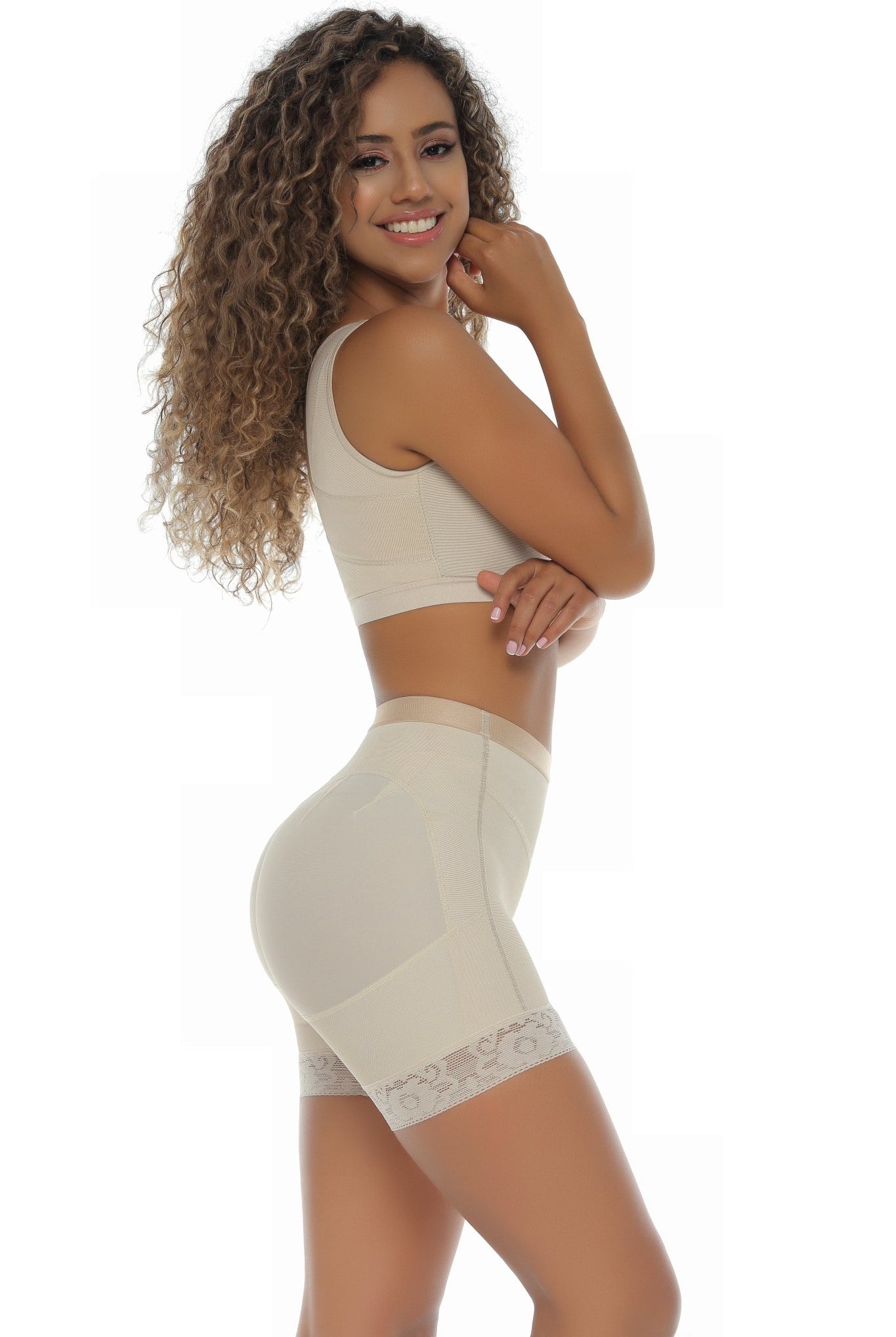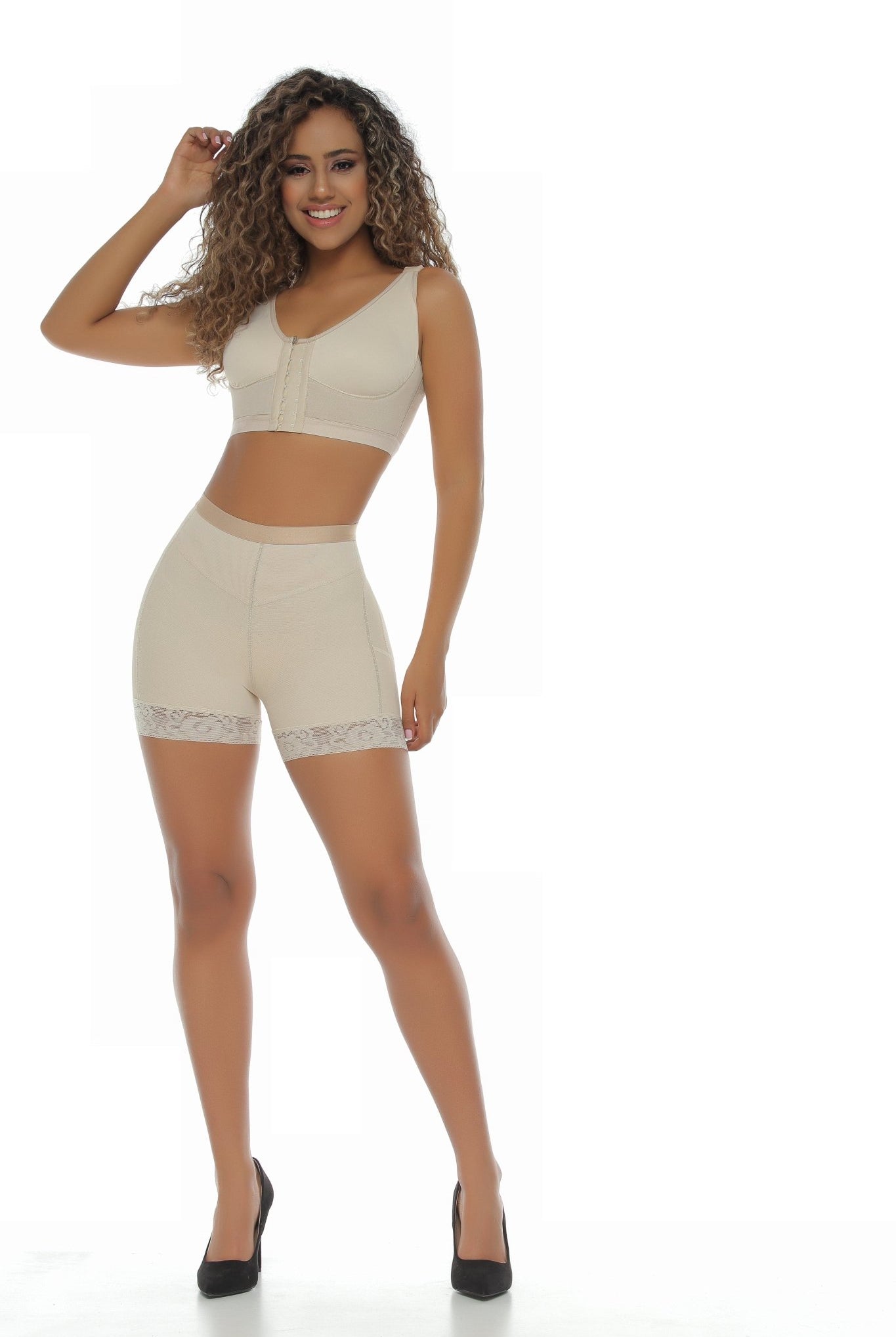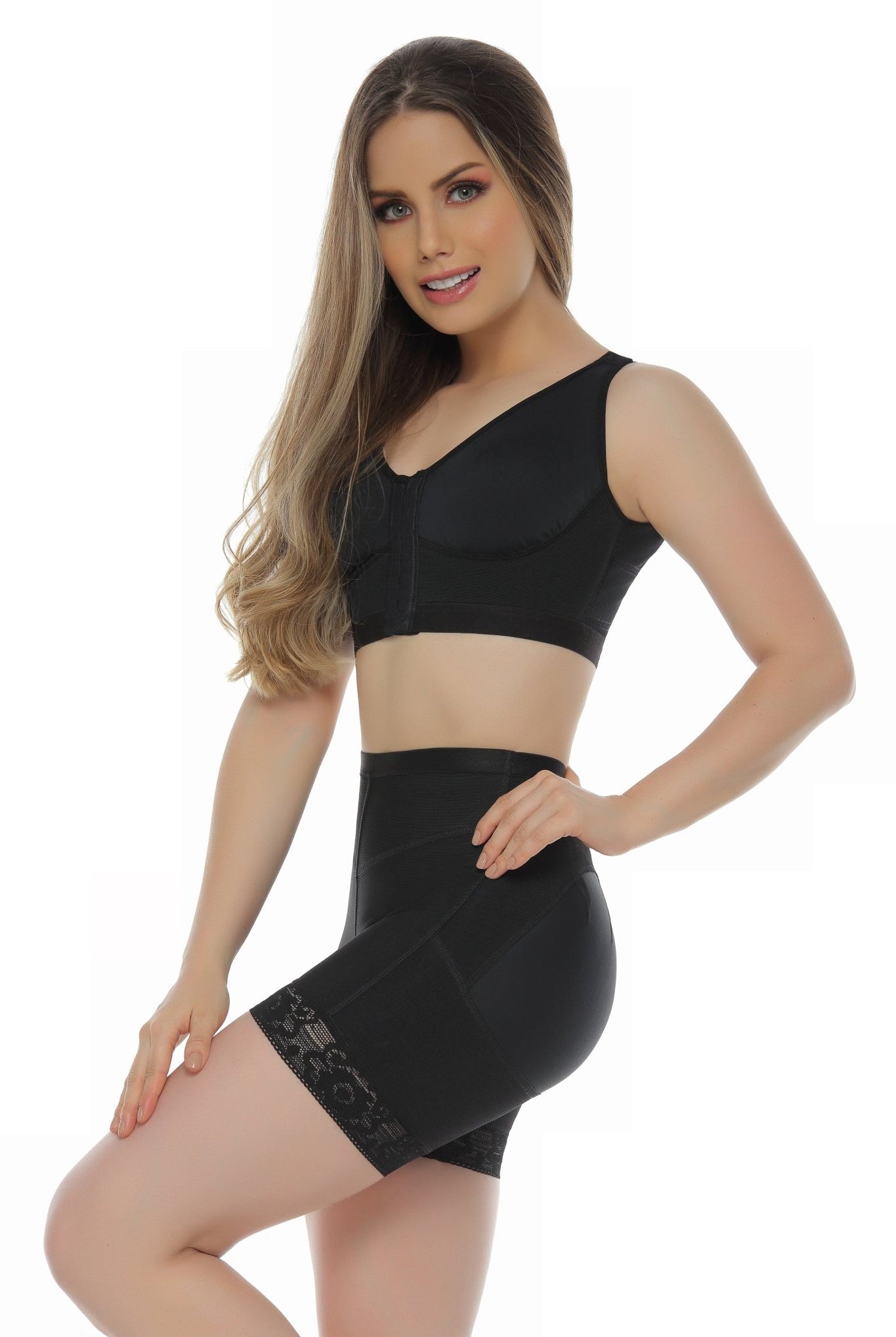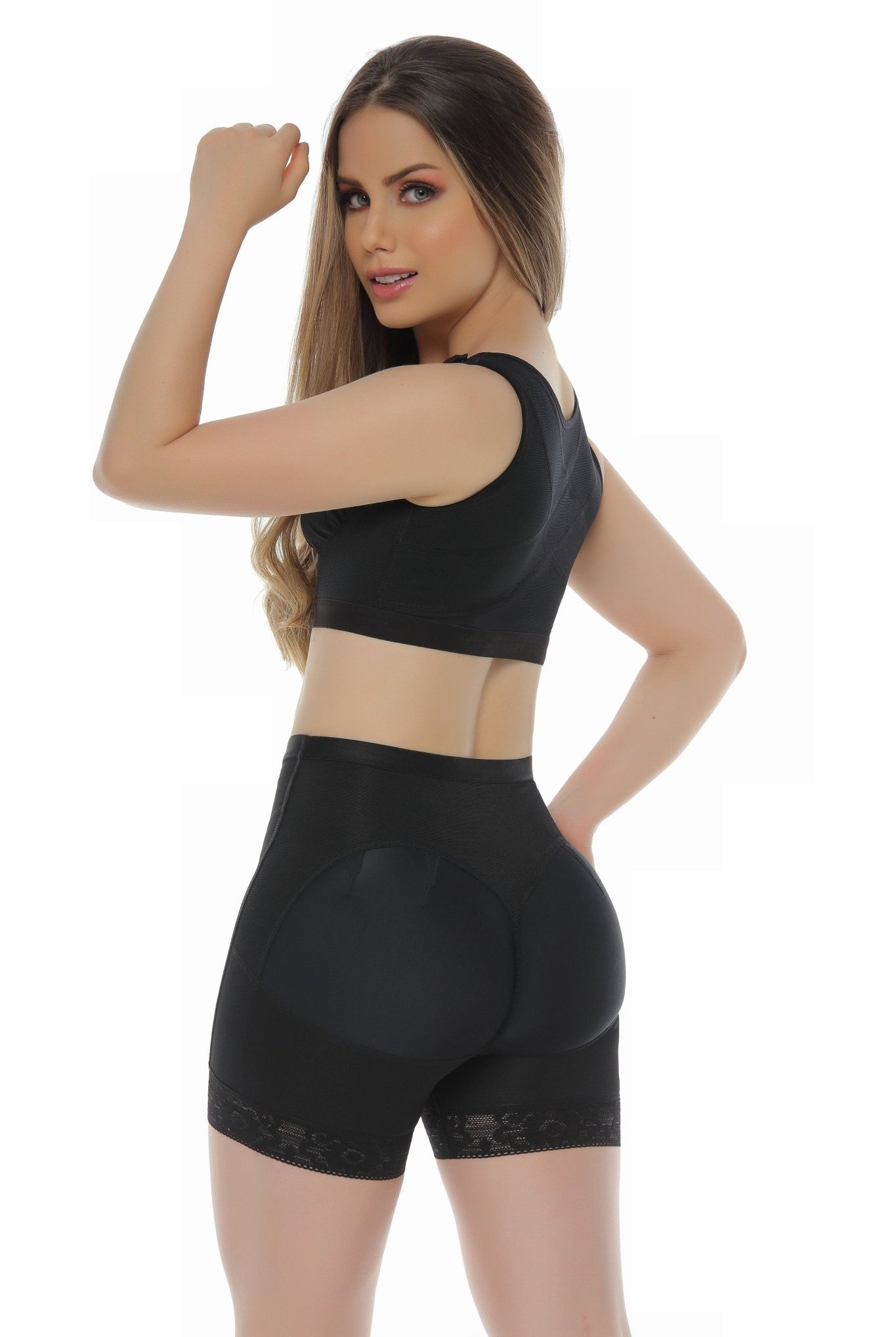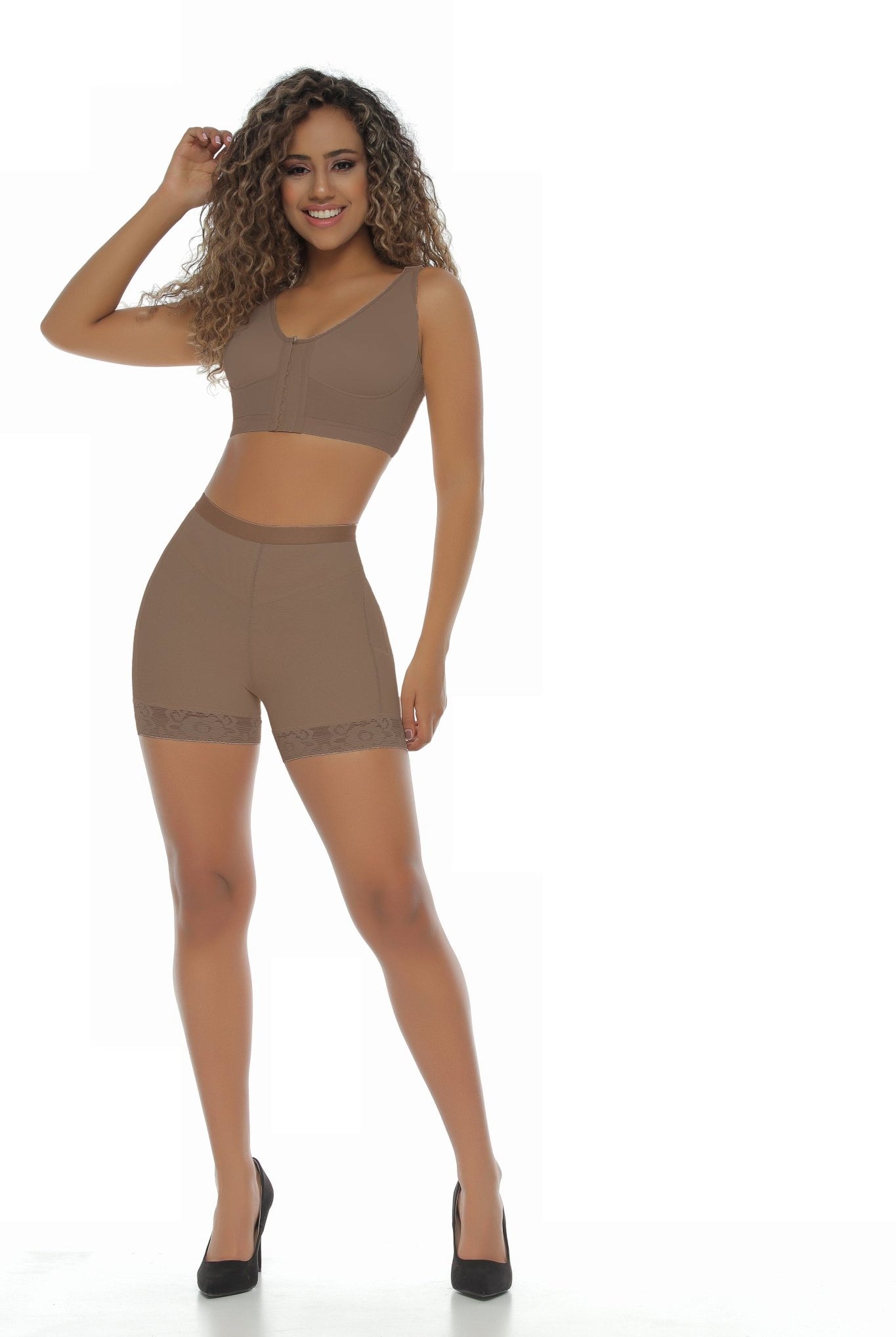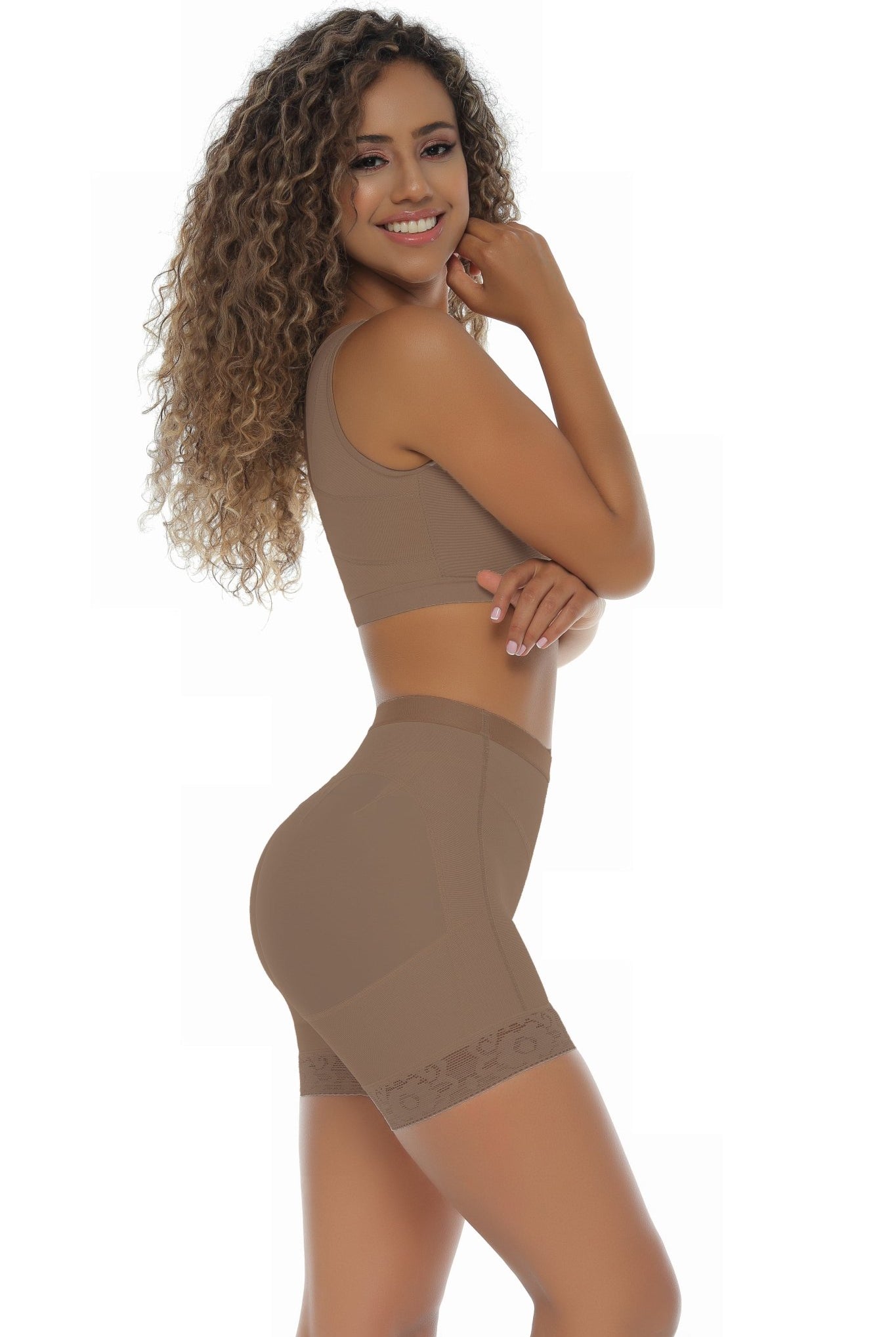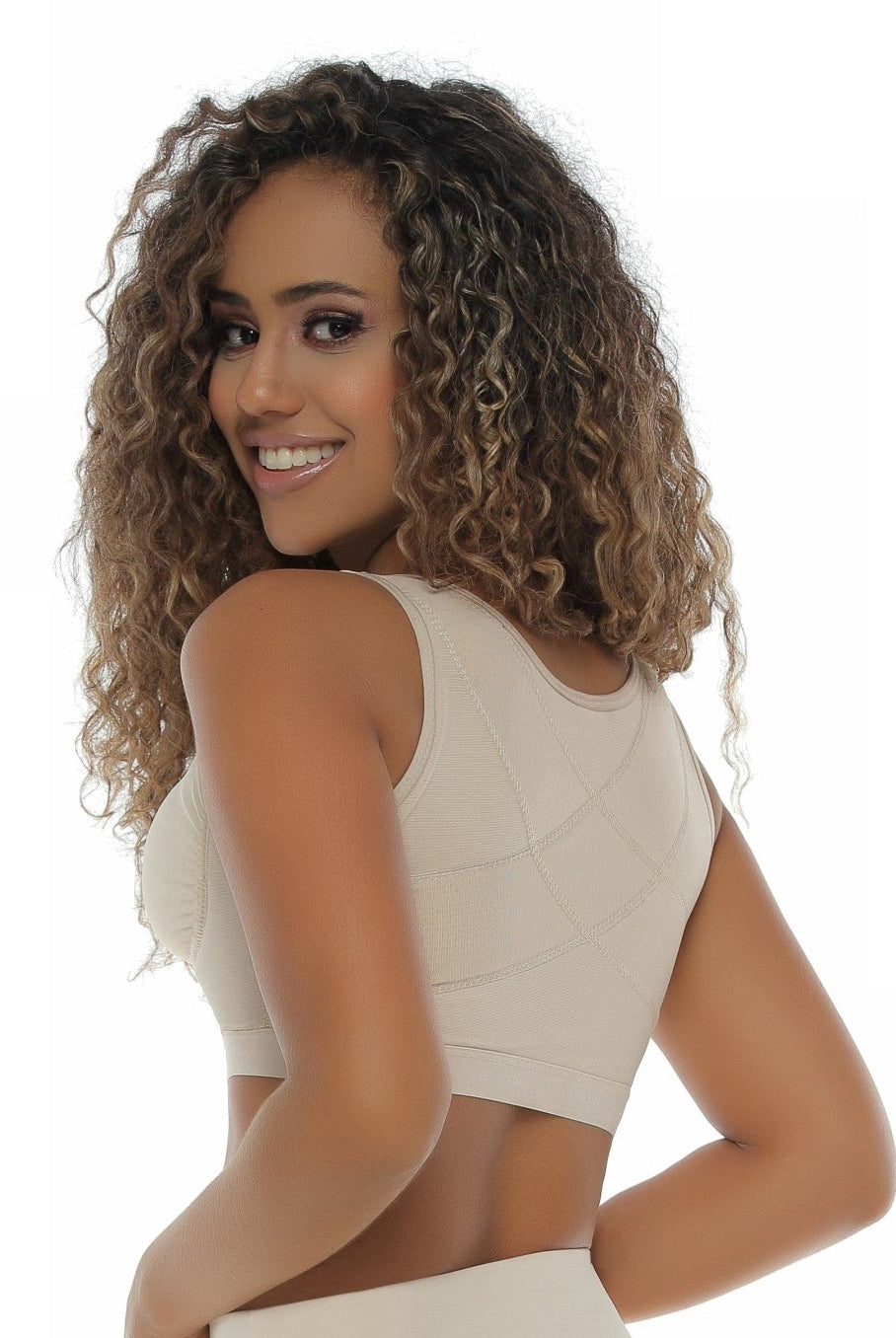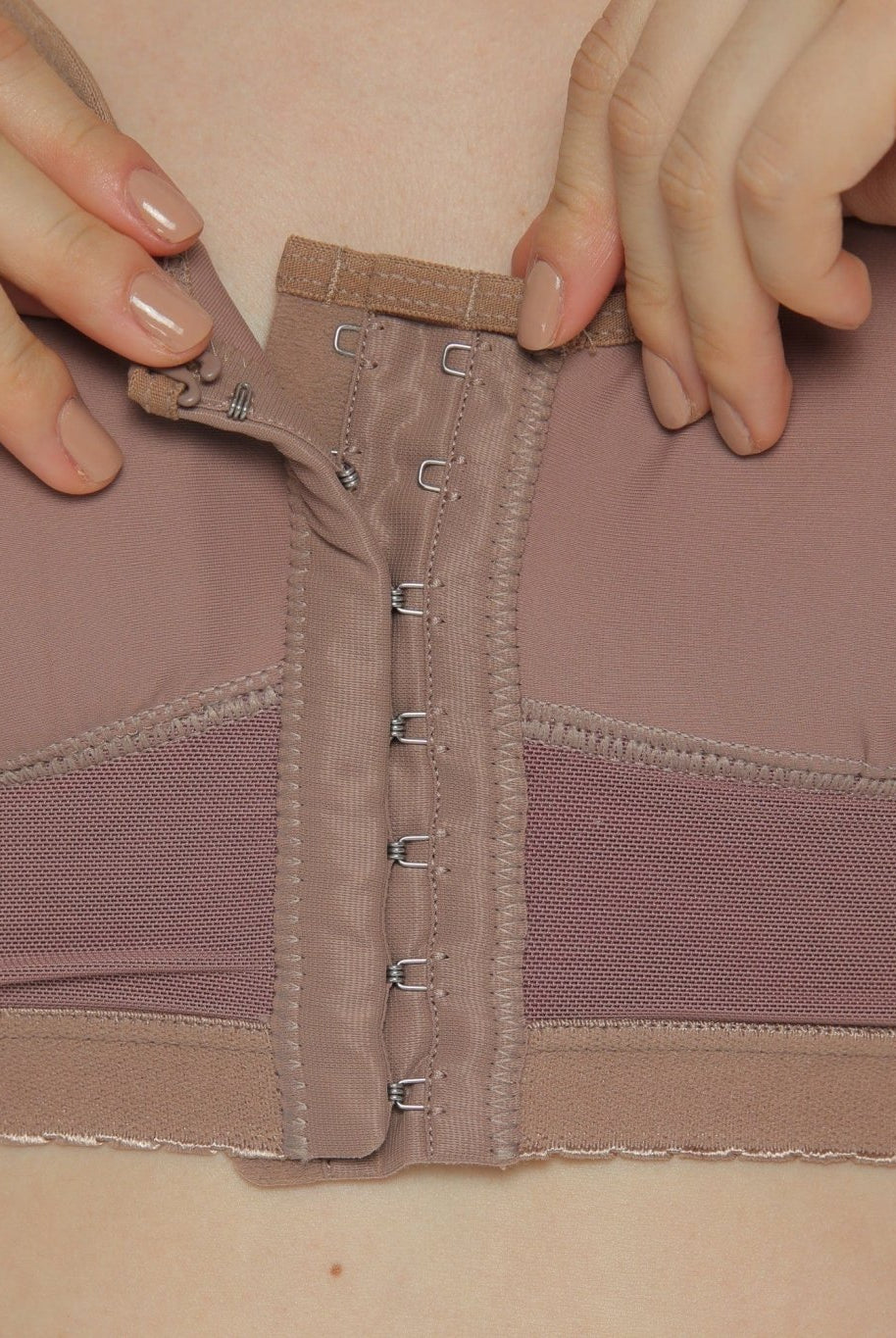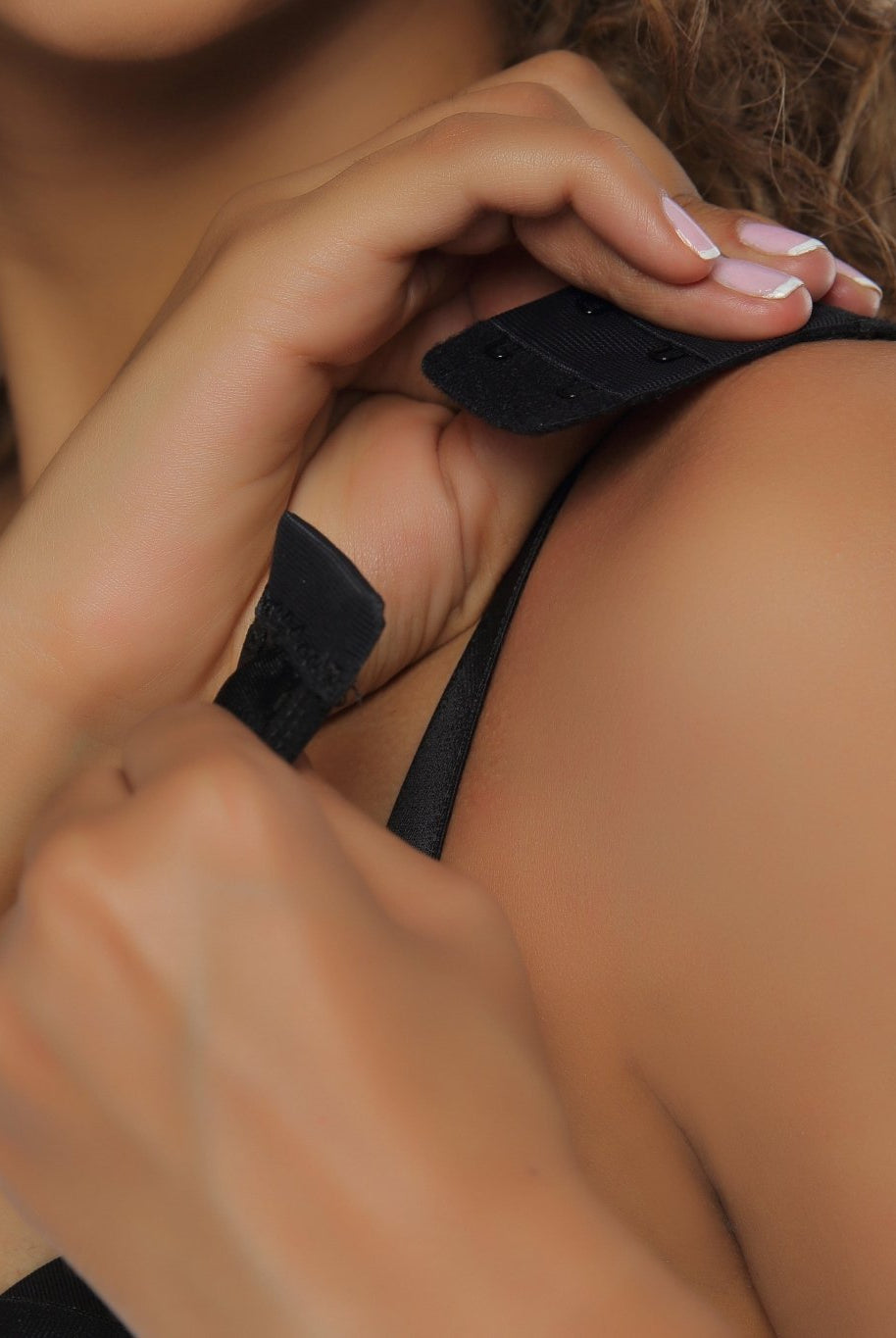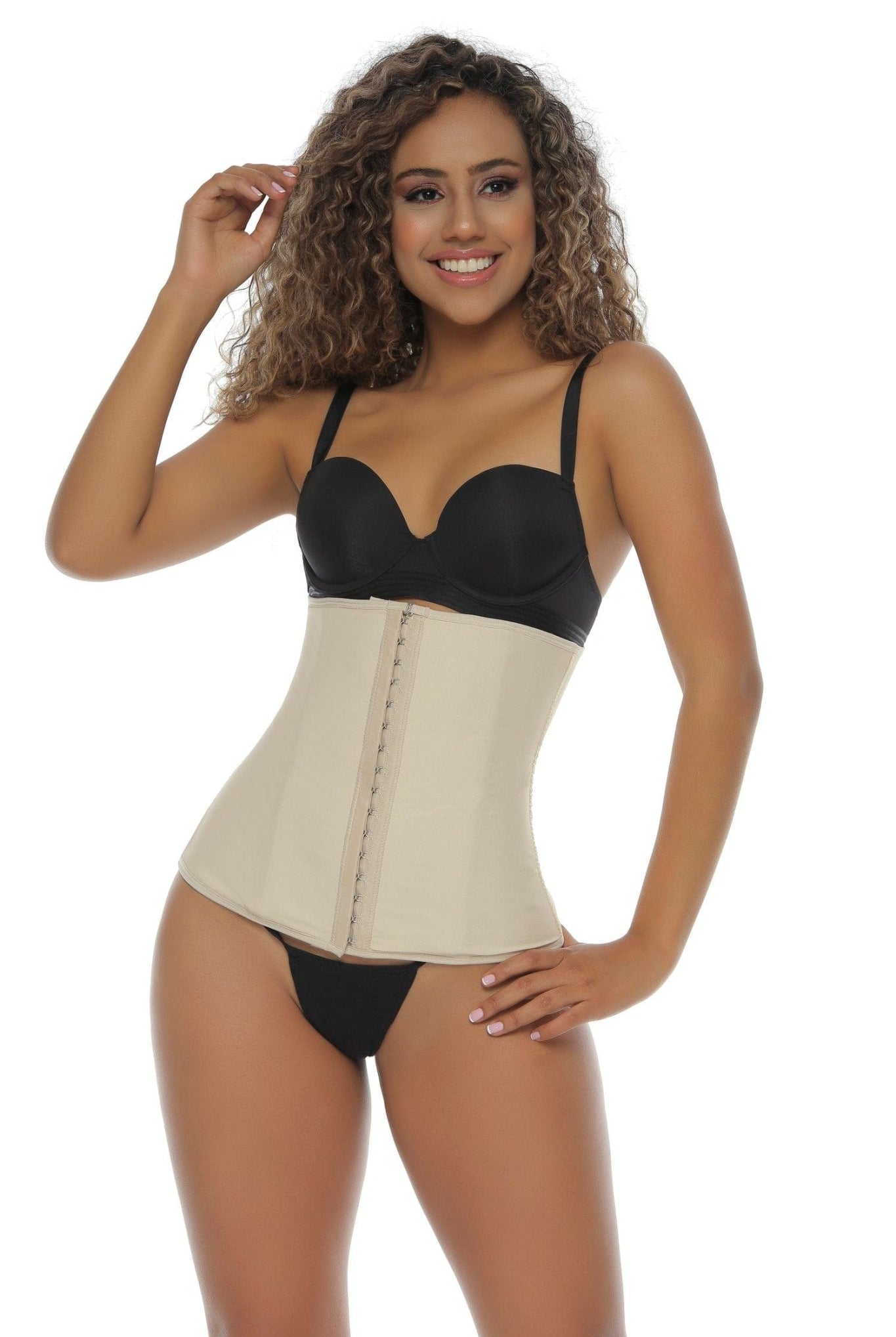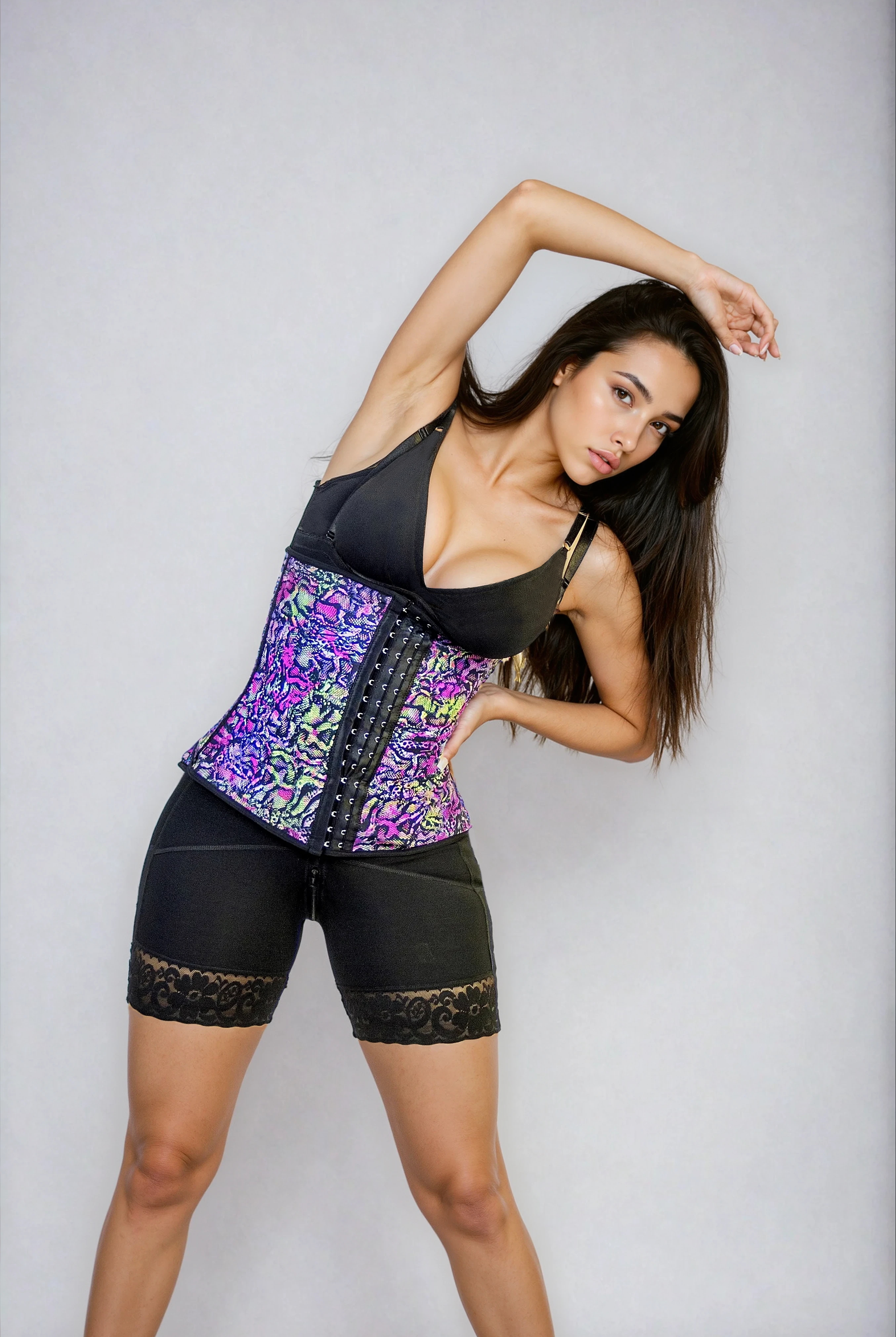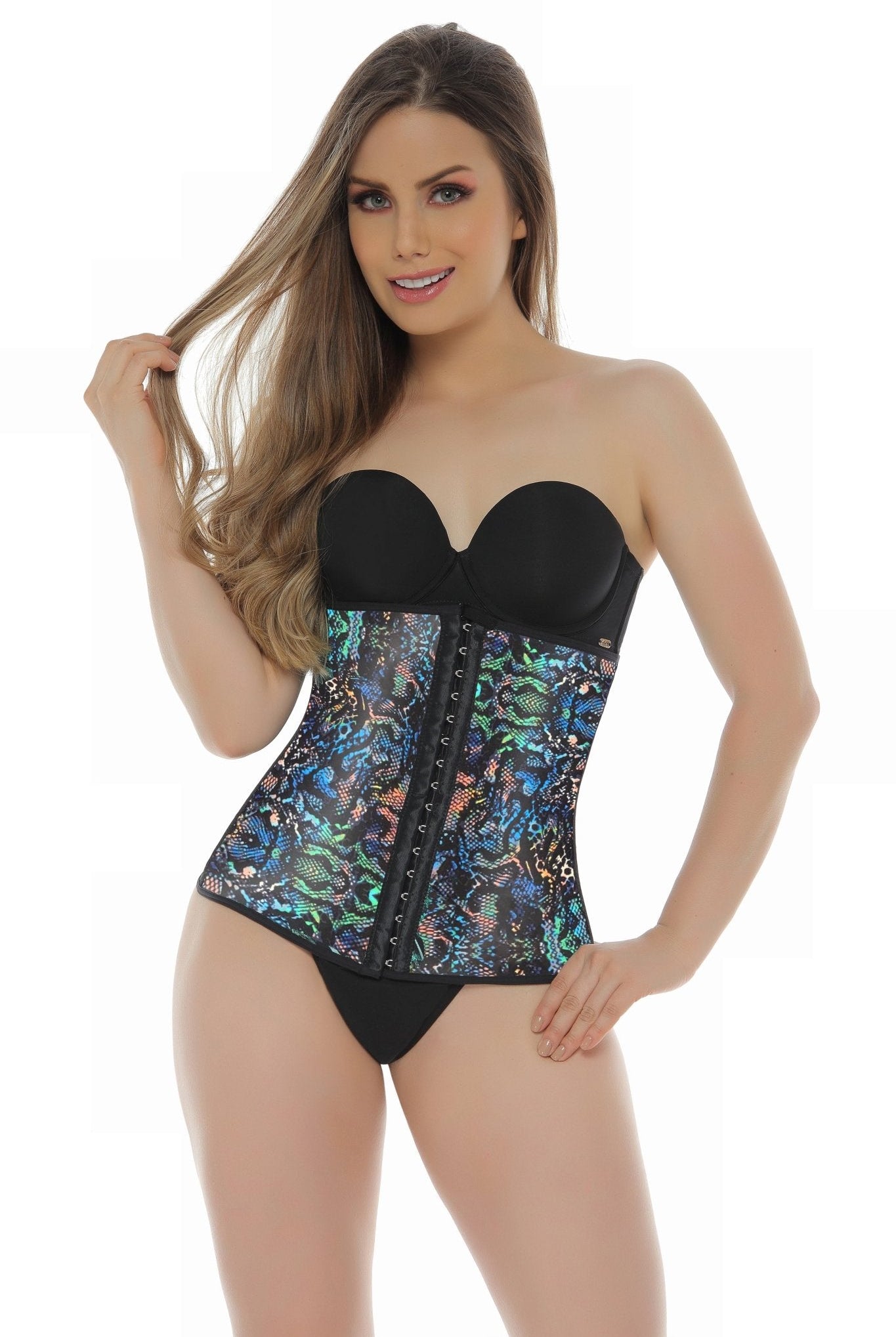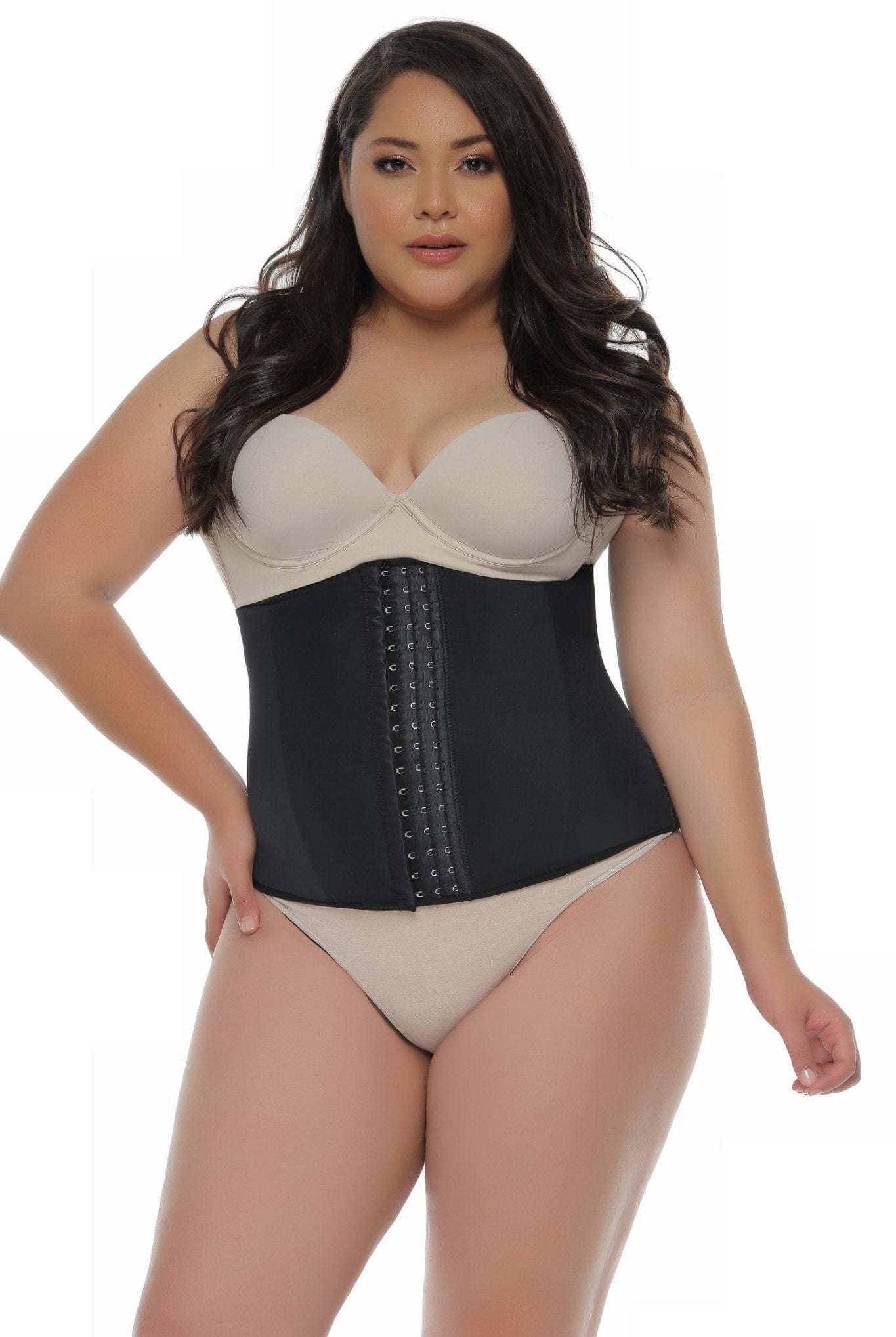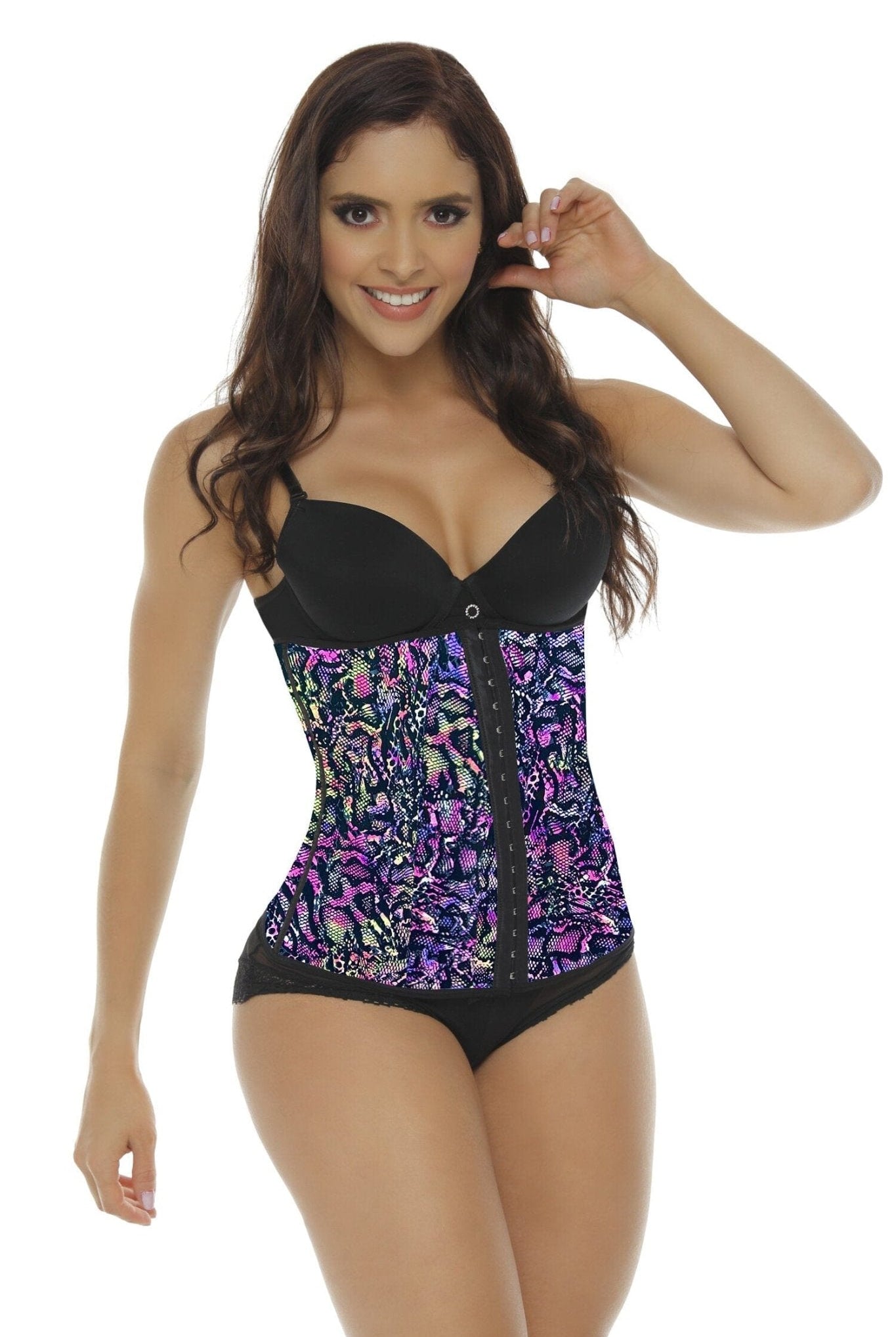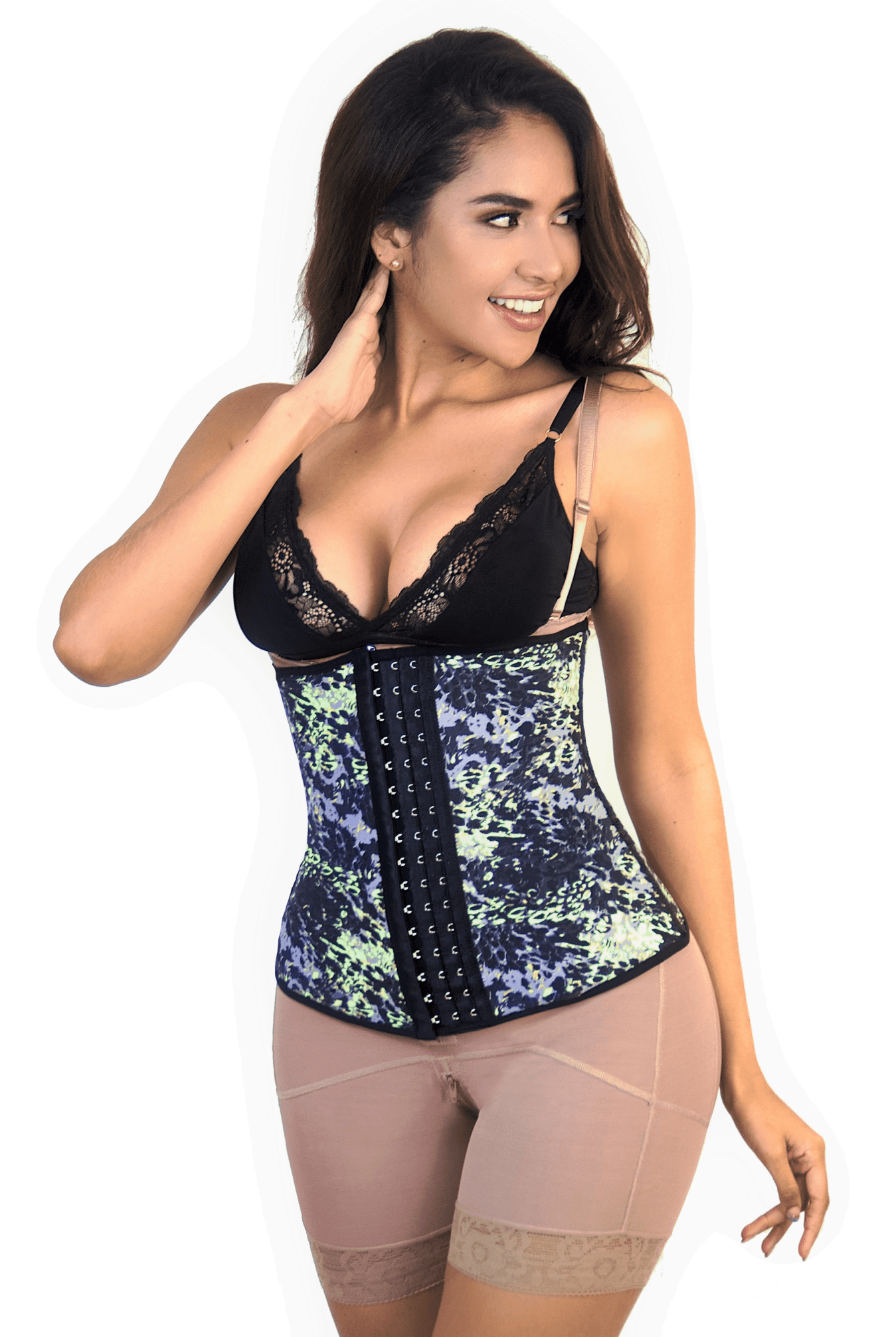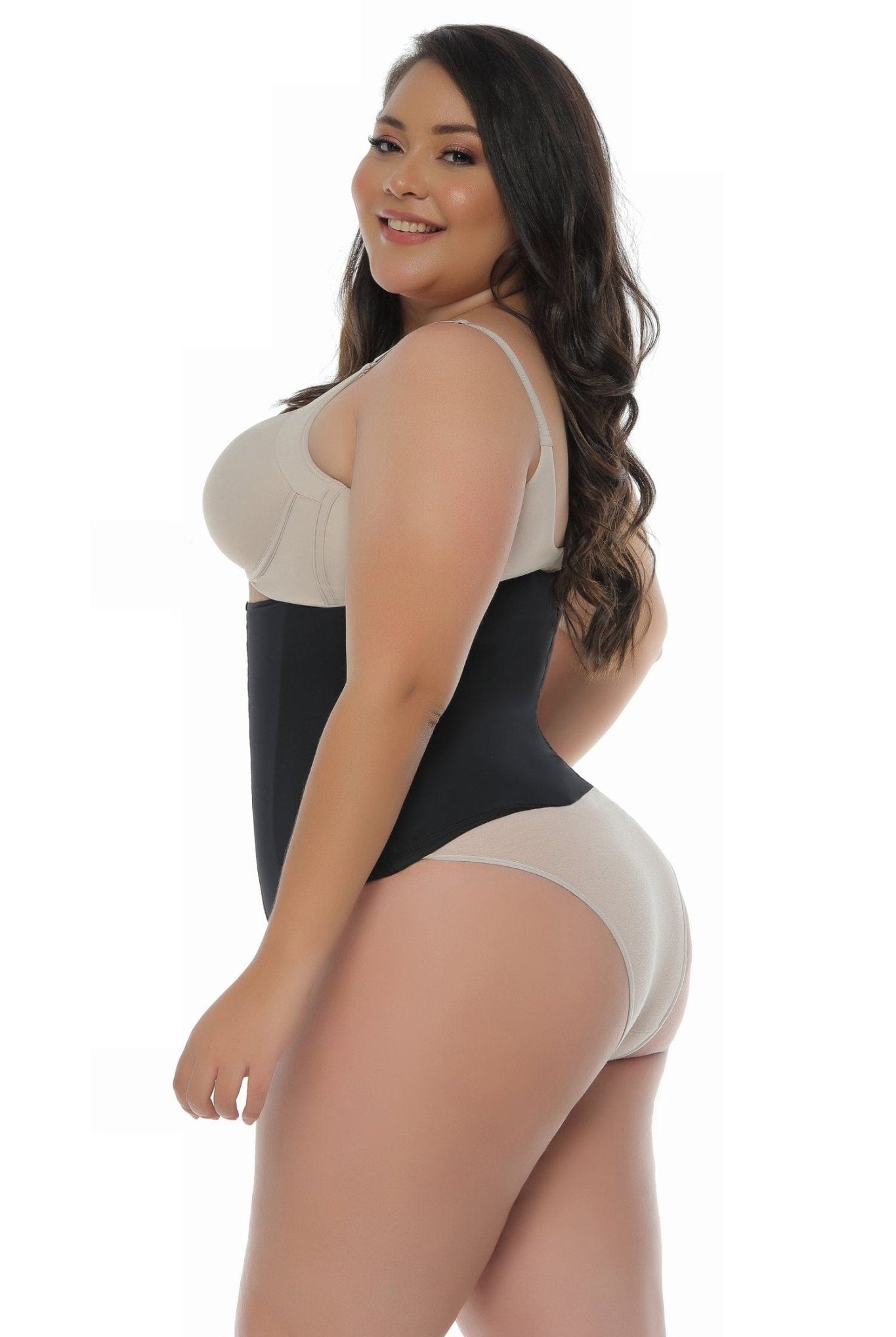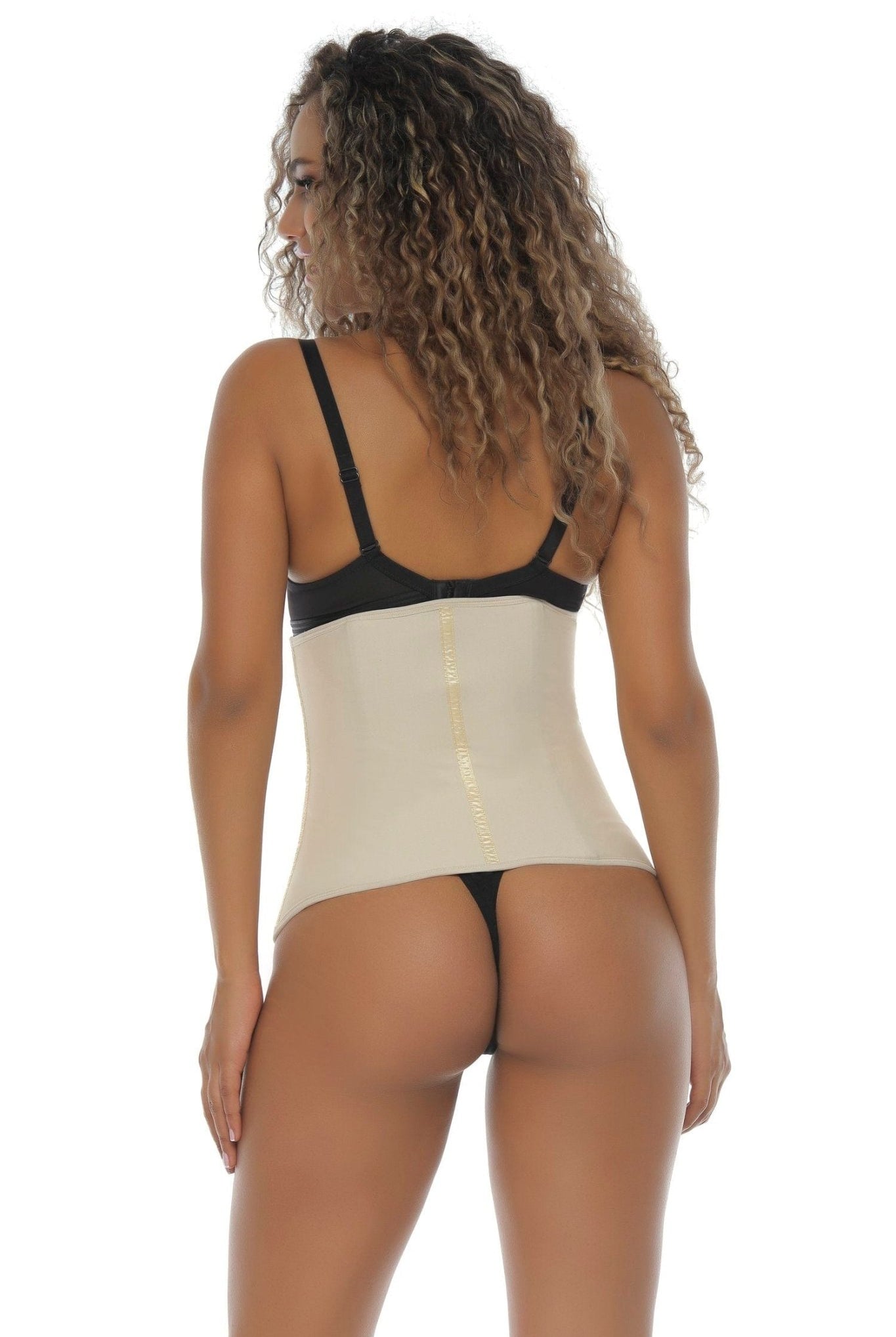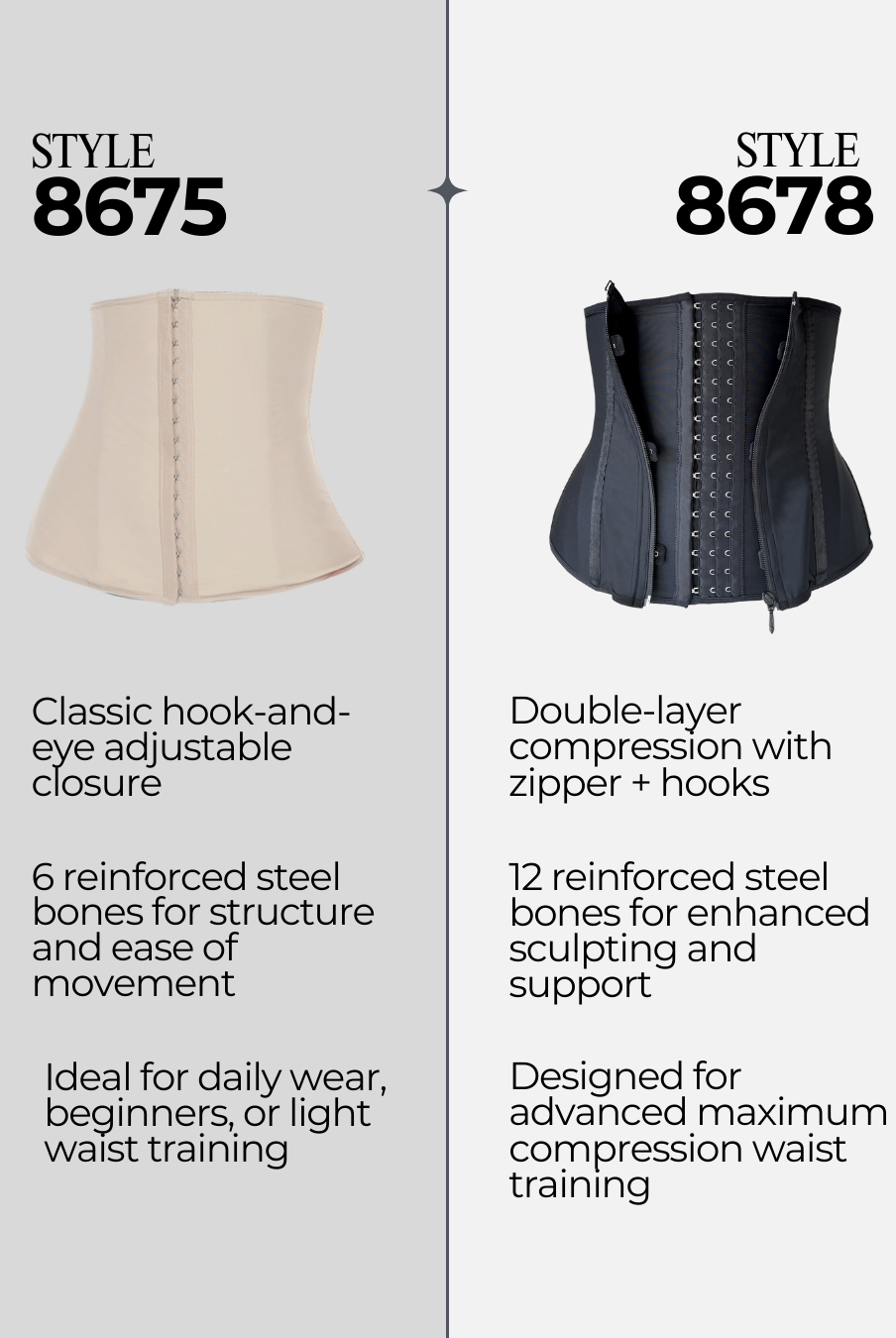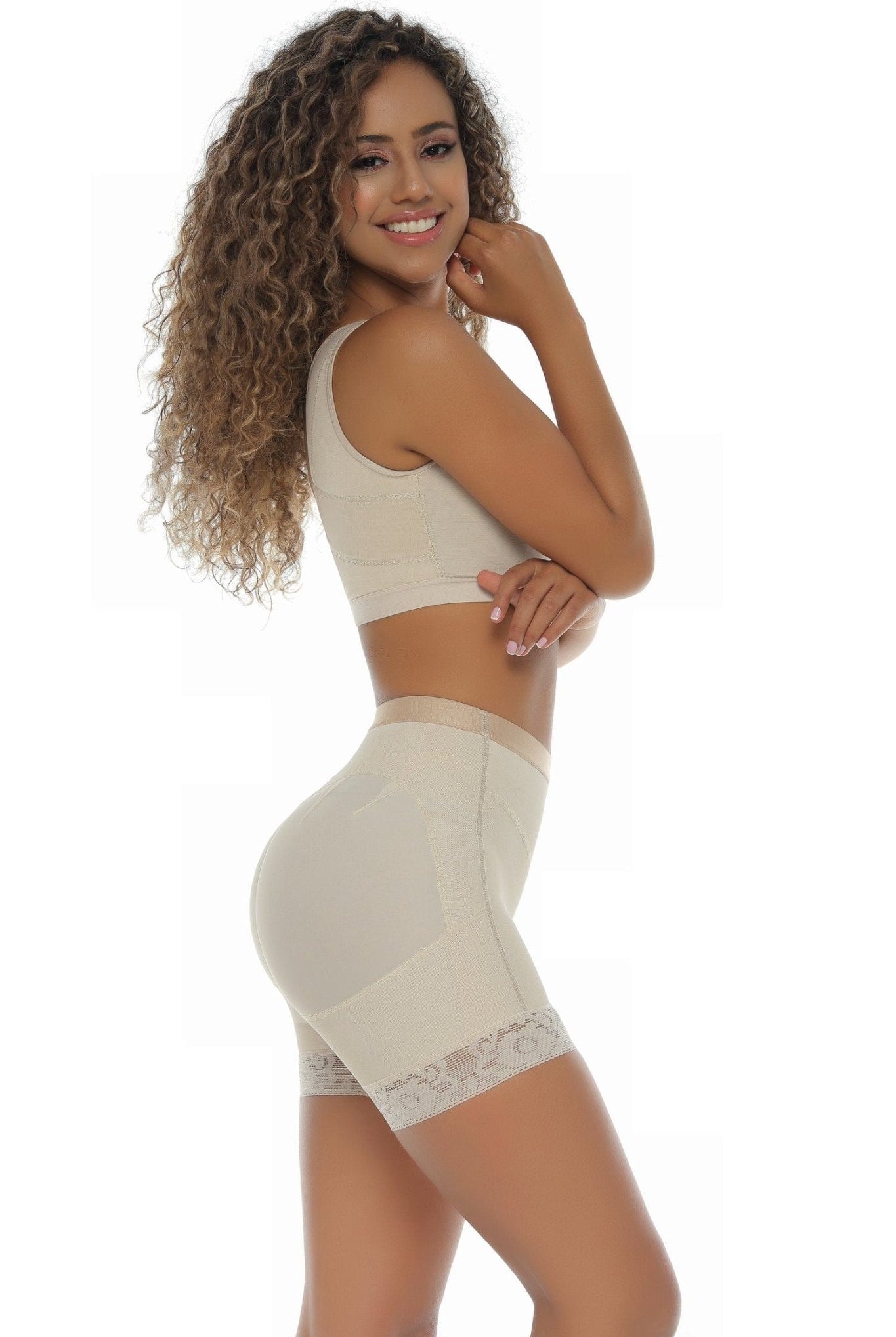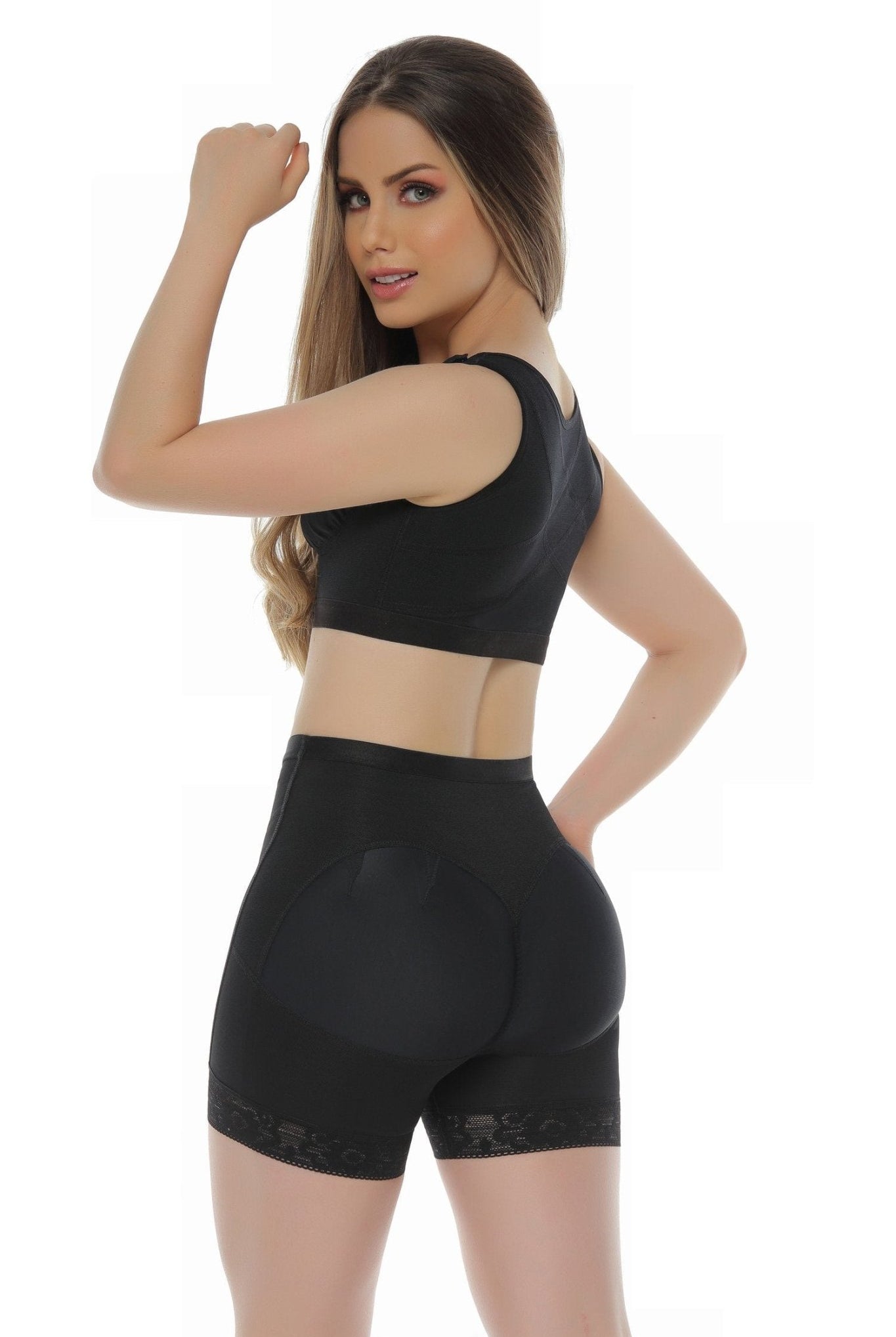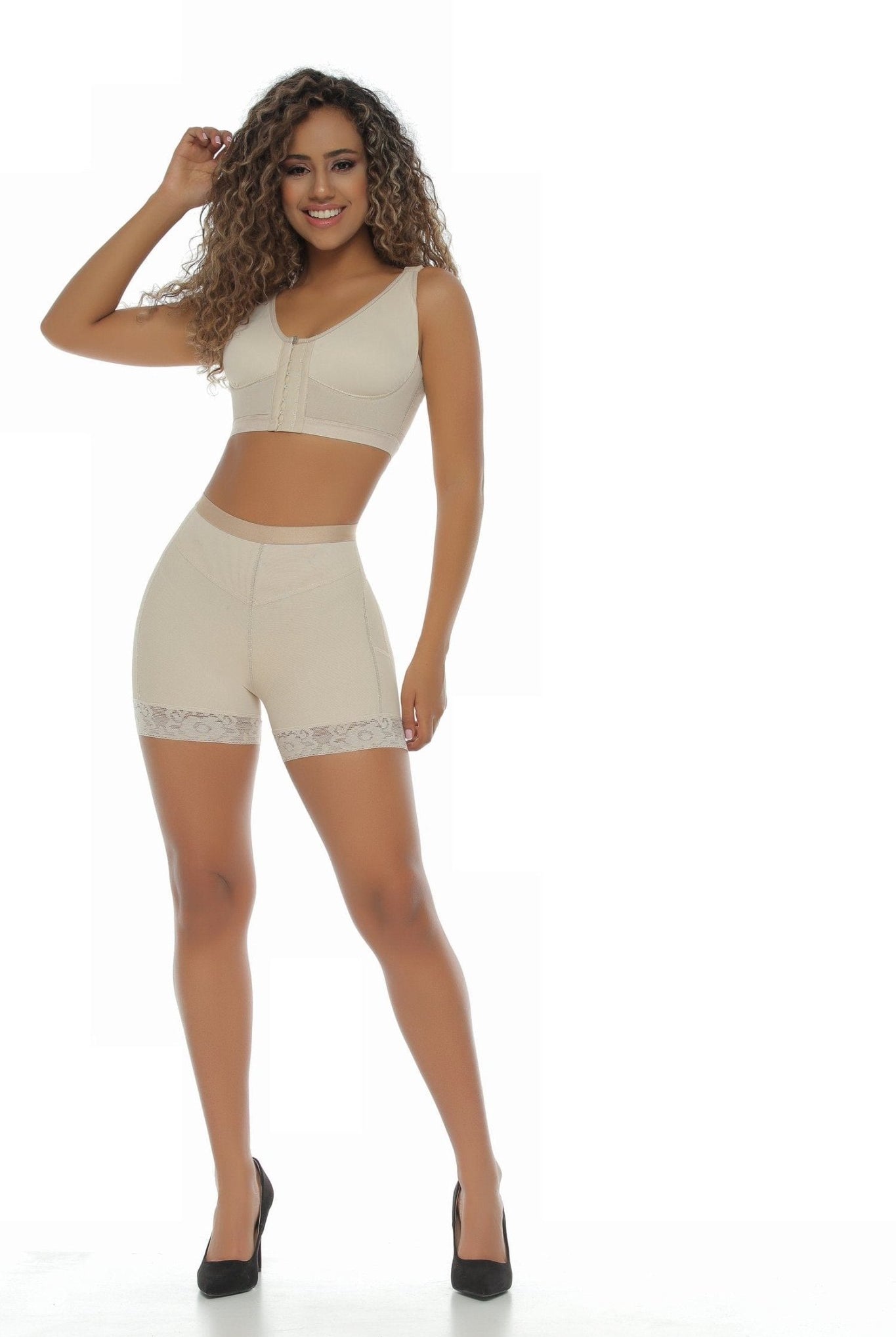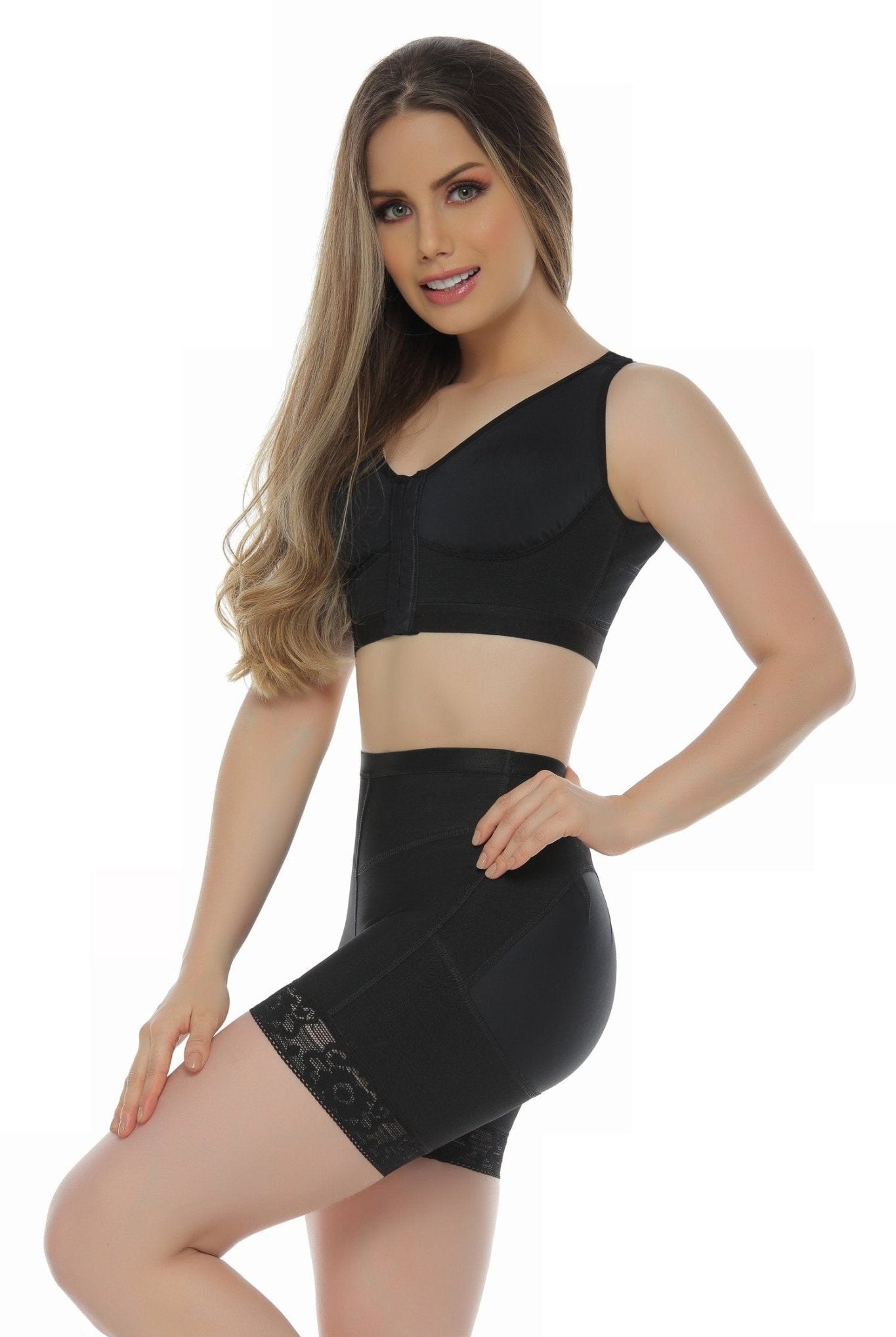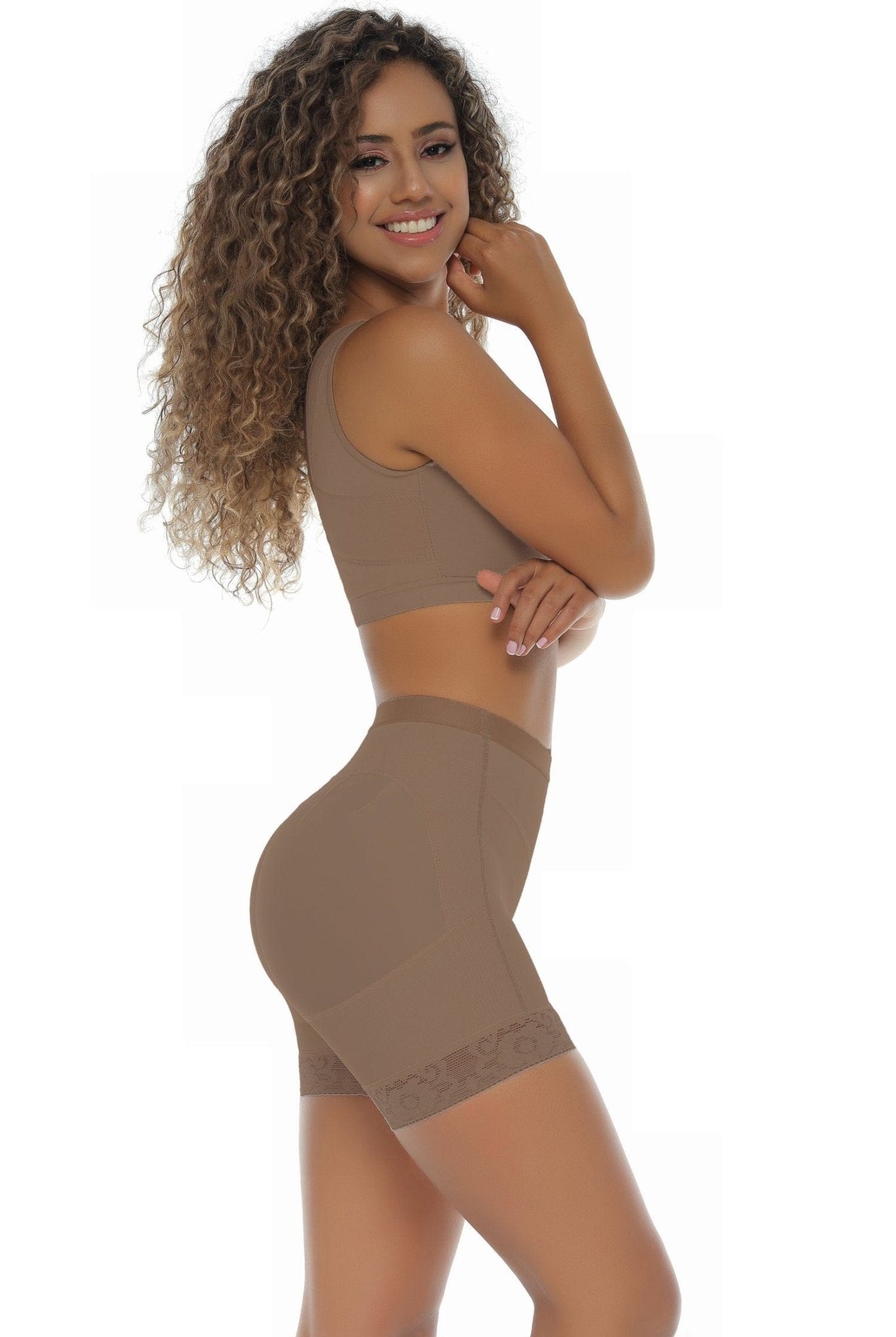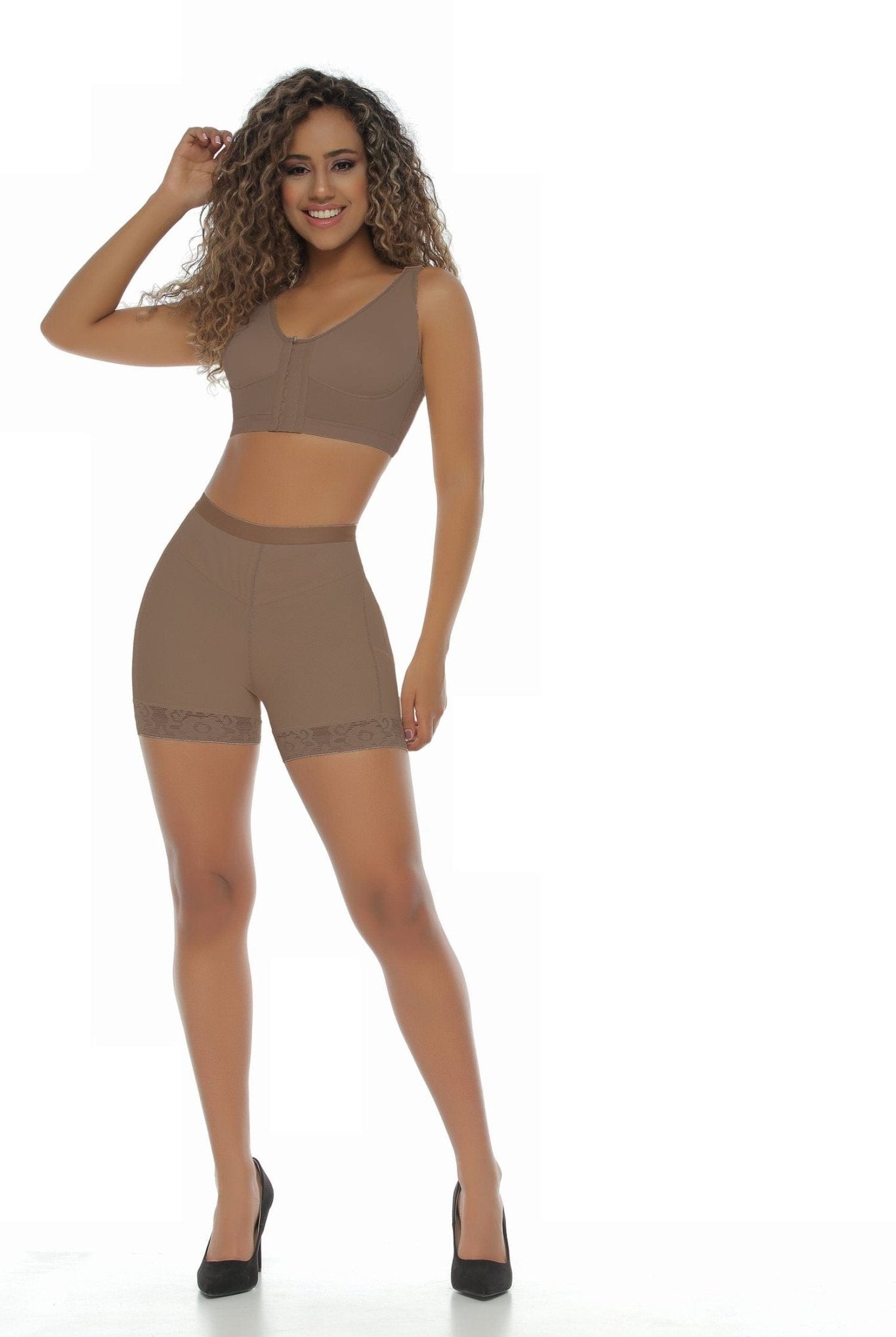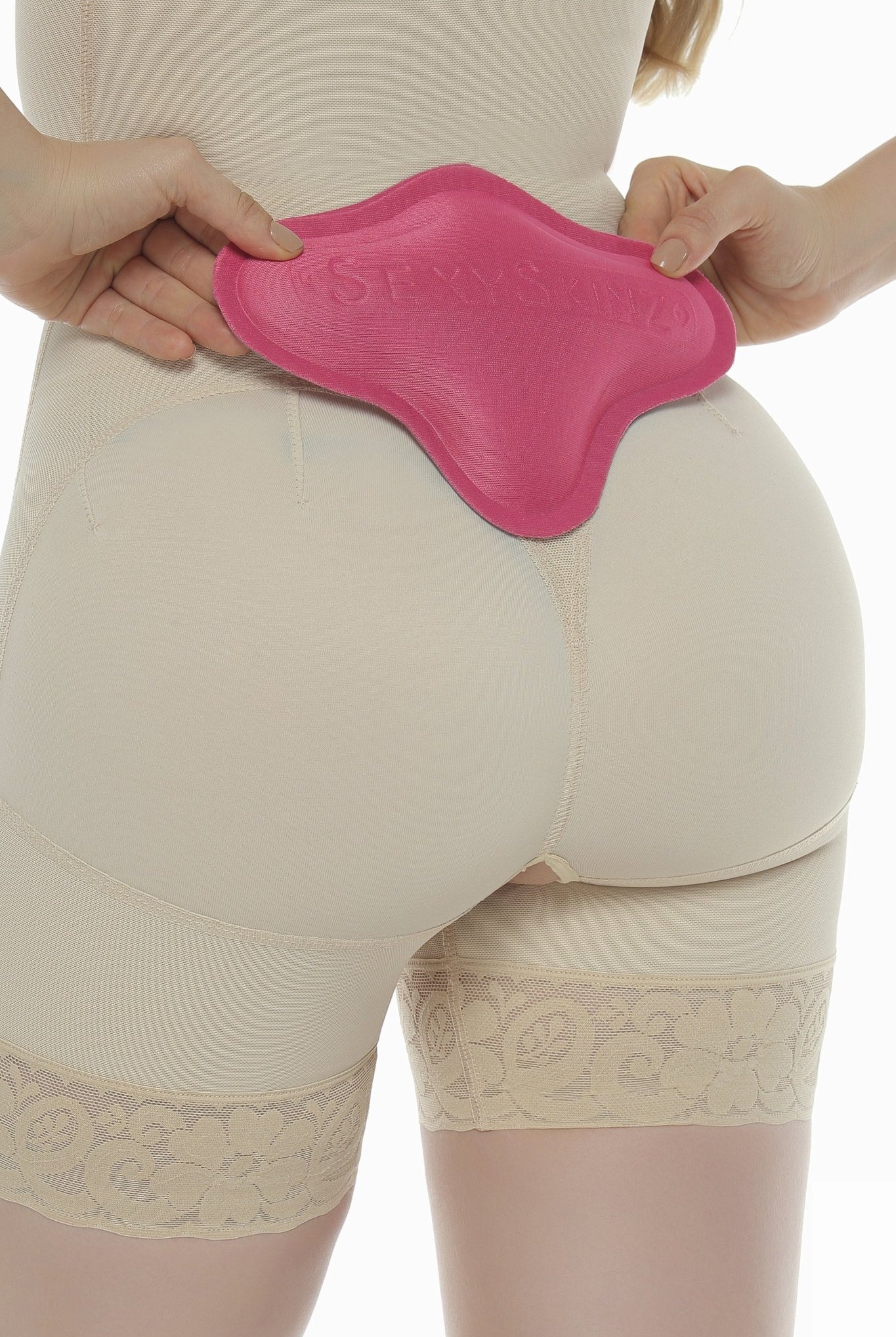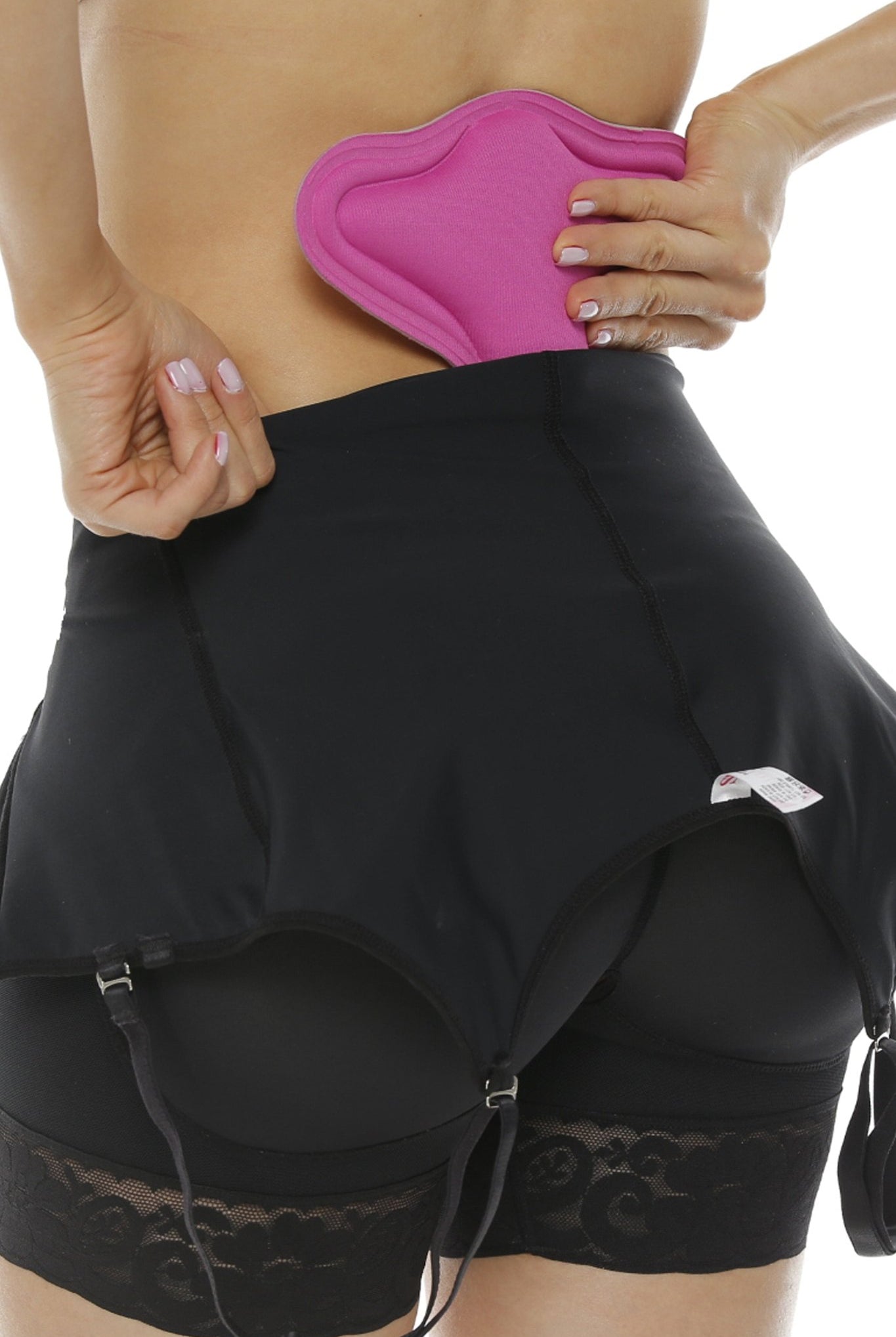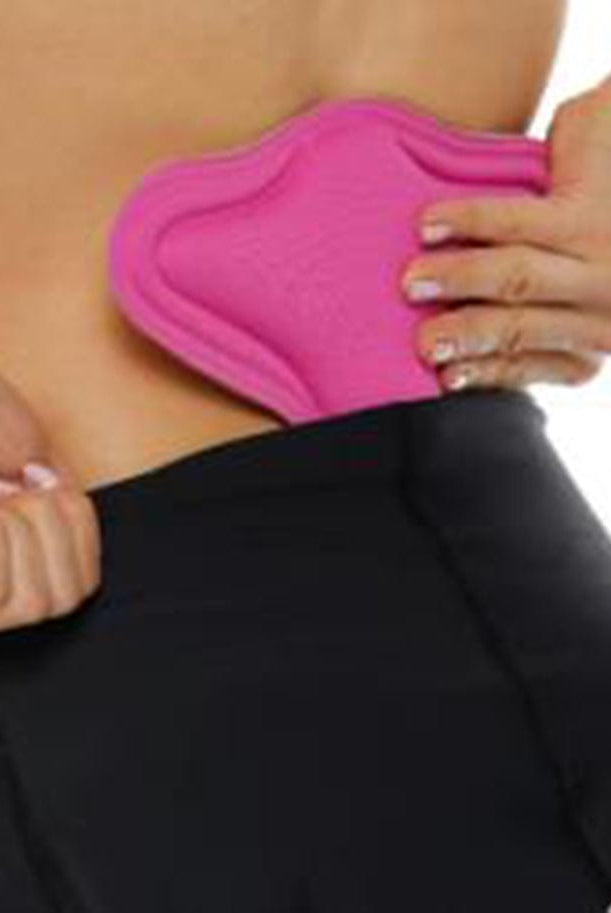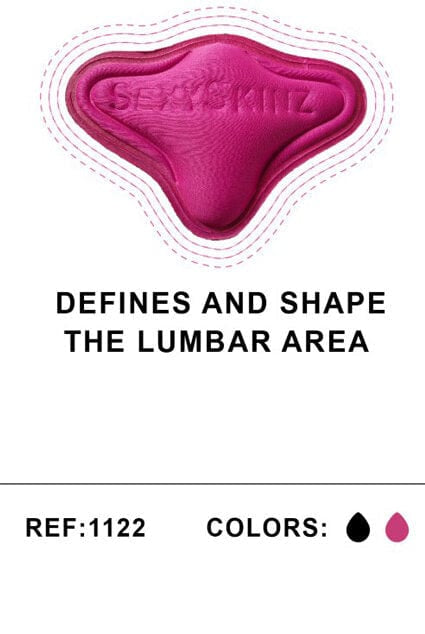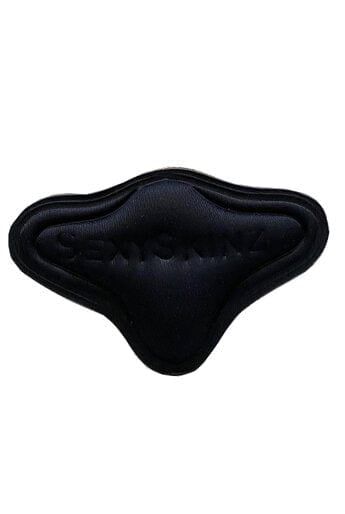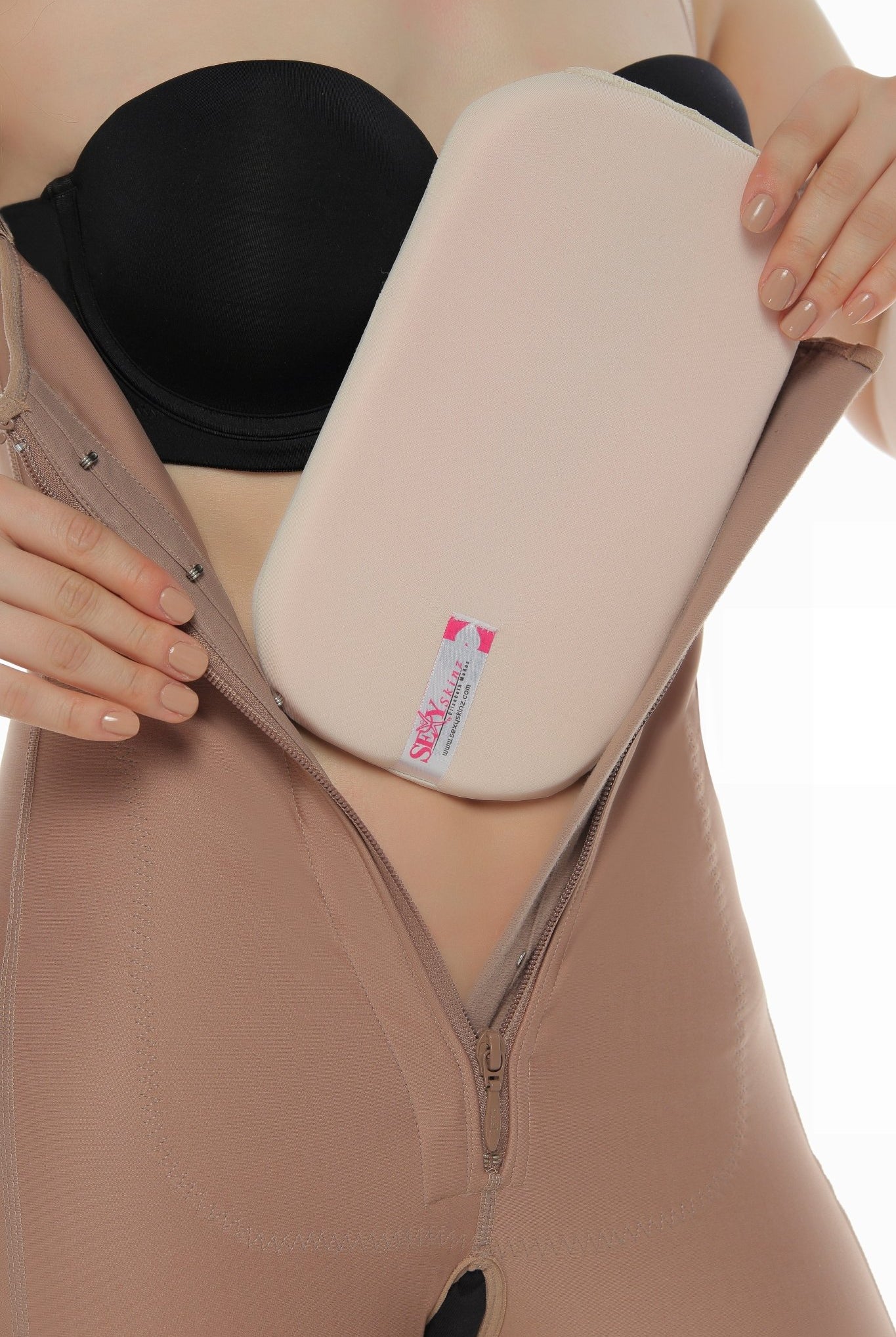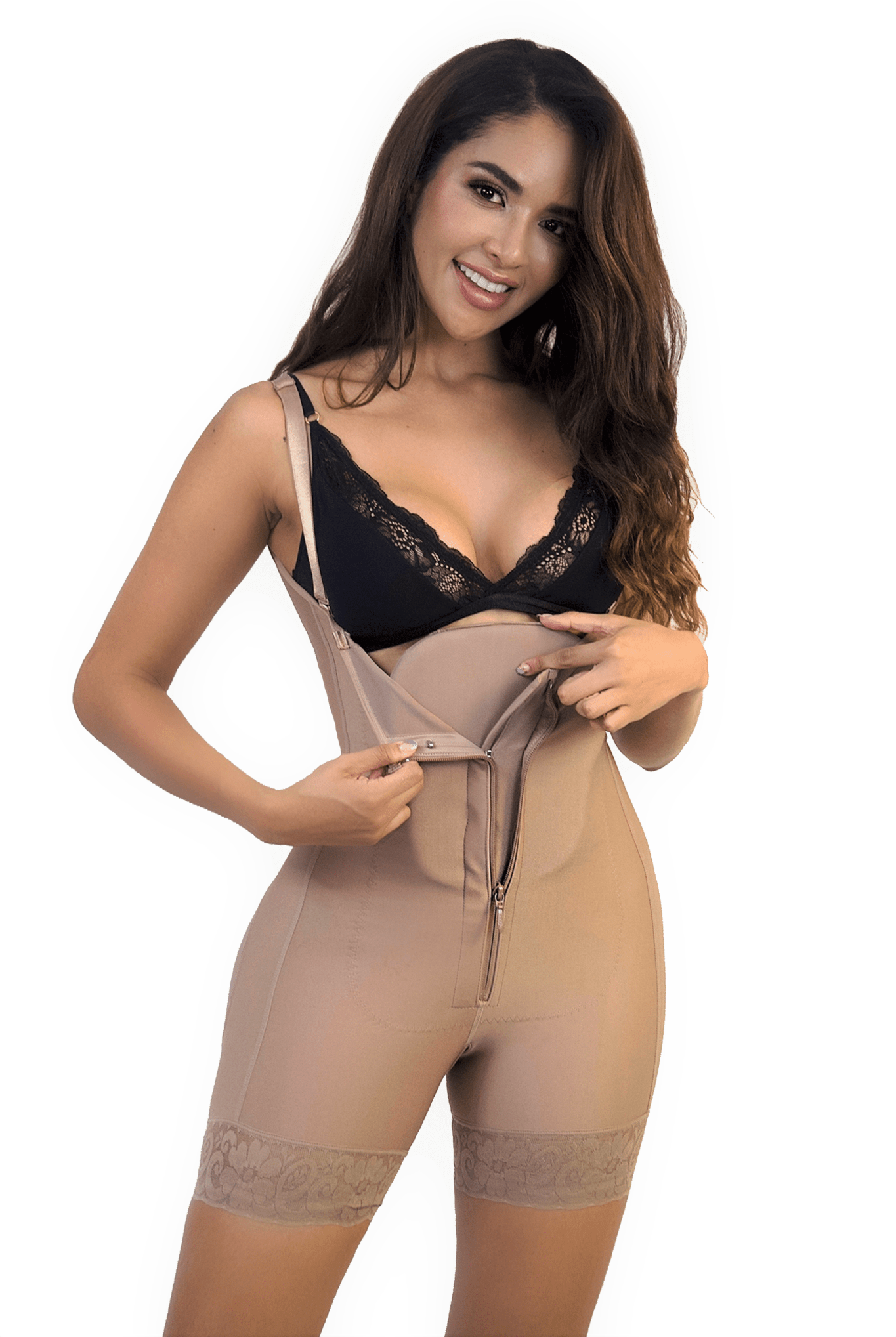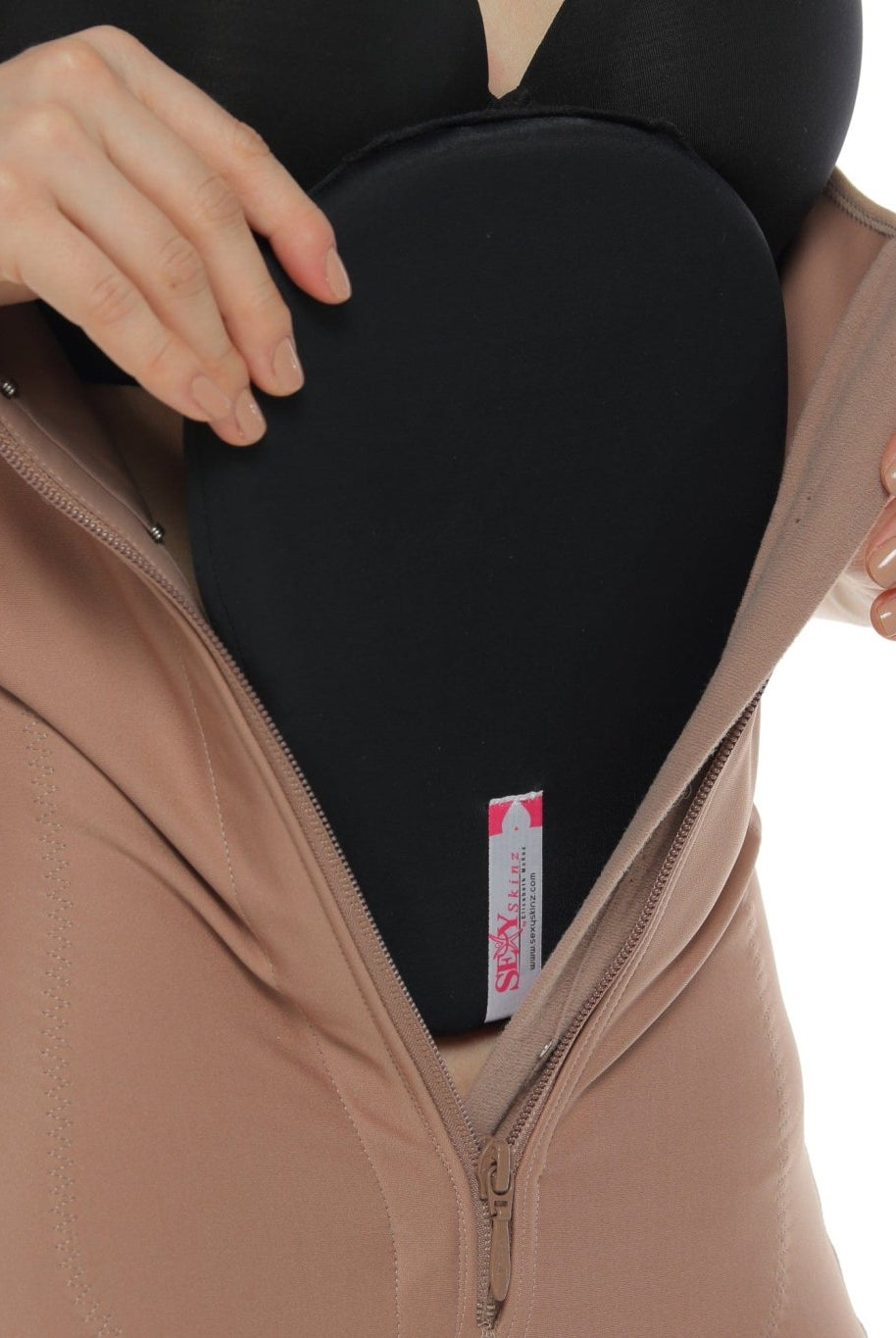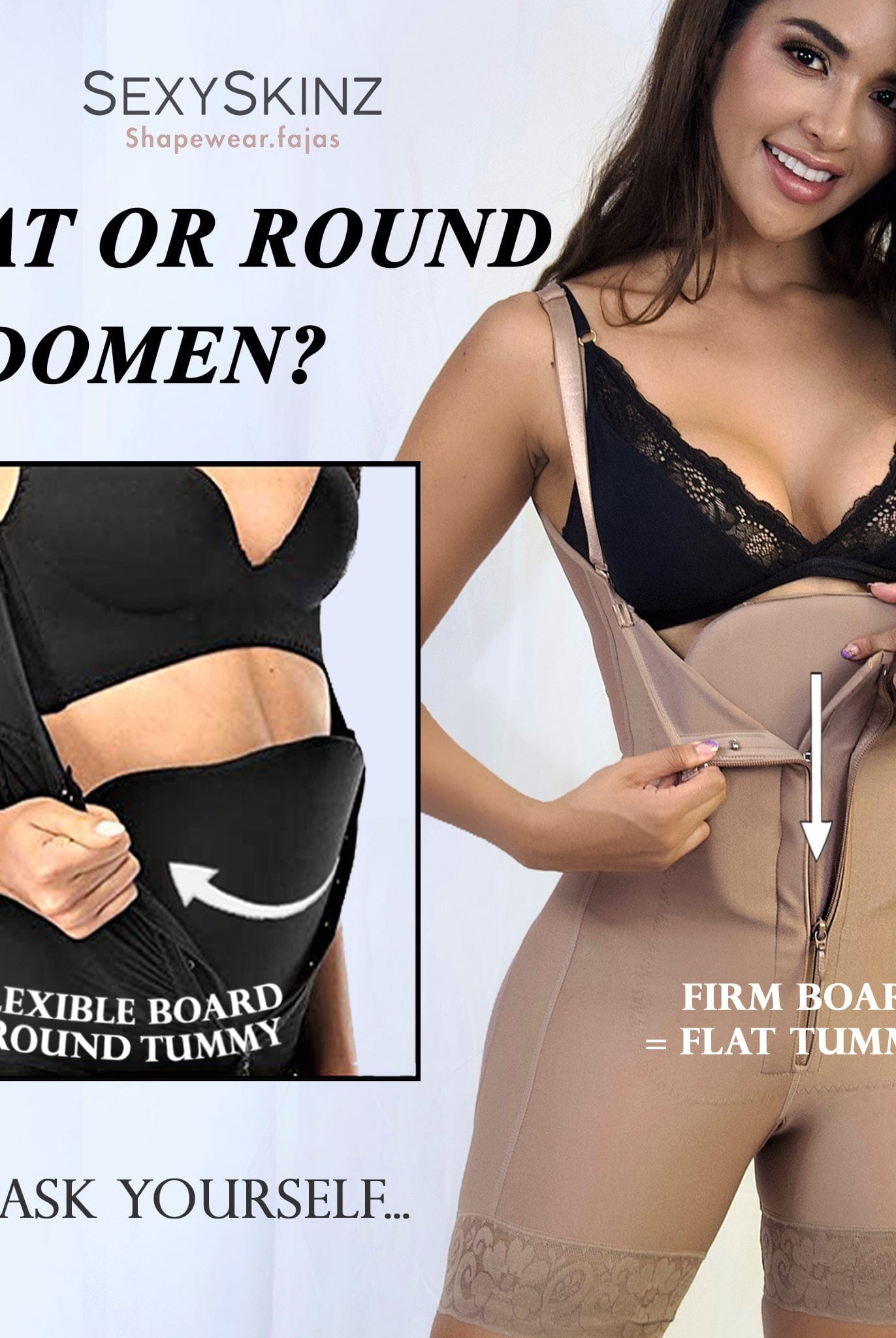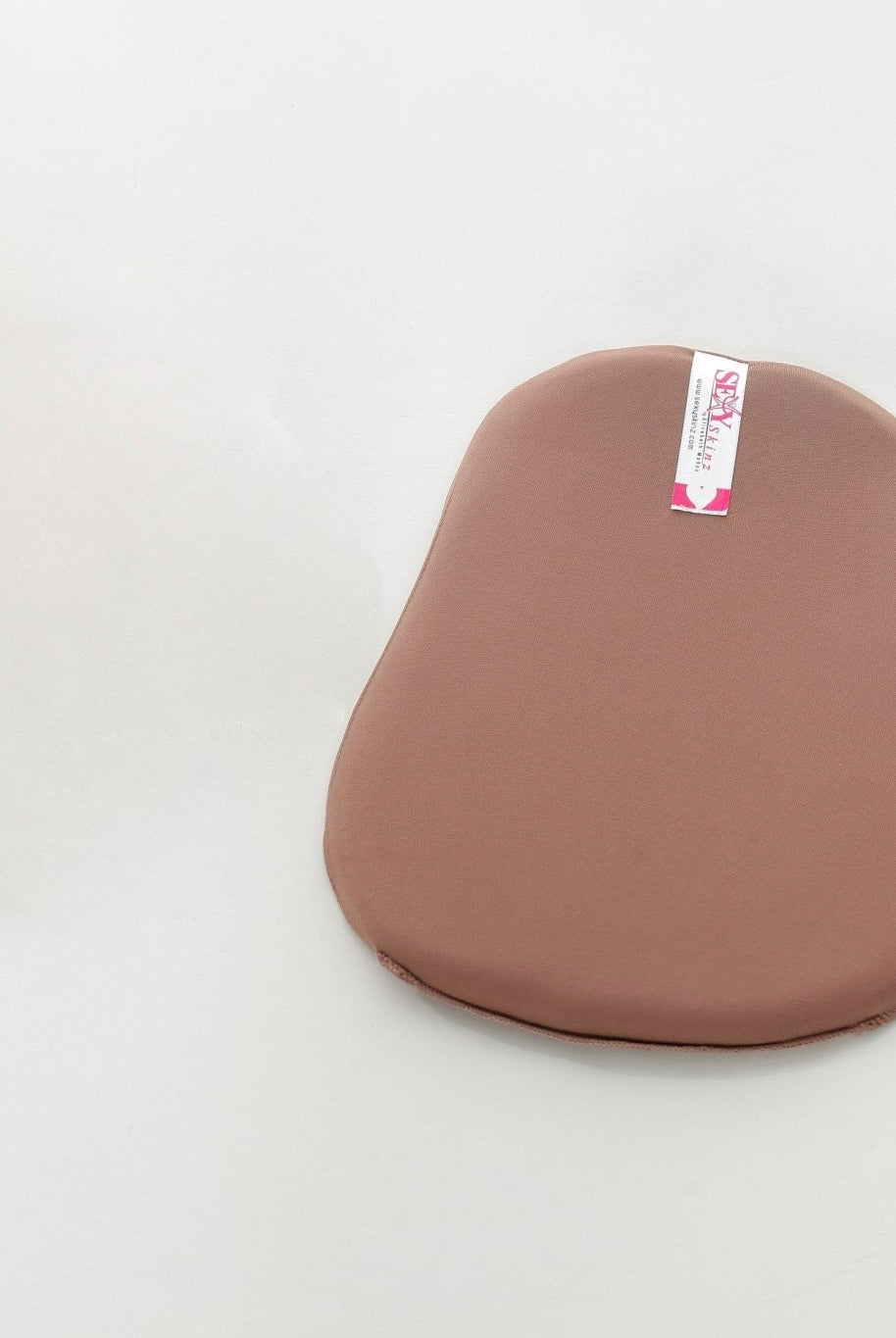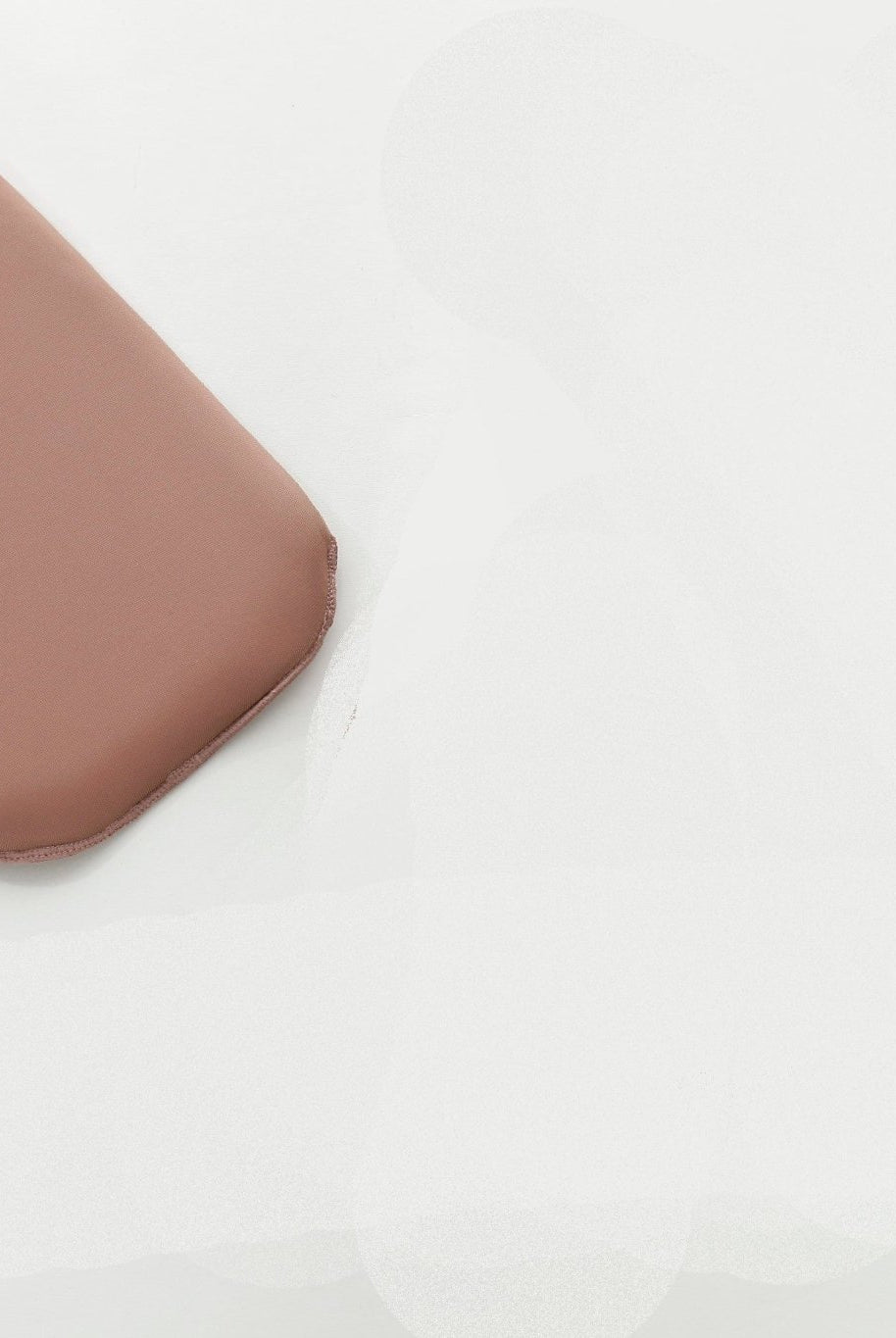FAQ
We might have already read your mind. Use the search to find what you are looking for.
FAQ (Frequently Asked Questions)
What’s the difference between Stage 1 and Stage 2?
Stage 1 garments are designed for the immediate post-op period. They’re soft, stretchy, and comfortable to help reduce inflammation while your body is still swollen and sensitive. Think of them as your gentle support system.
Stage 2 garments offer targeted compression, especially in the waist area, and are built to sculpt your body and enhance your results. They’re made with extra room in the hip and butt areas to protect newly transferred fat — perfect if you've had procedures like a BBL.
📝 Note: Some fajas can be worn during both stages depending on your body and recovery process. Always check with your surgeon.
How do I know when it’s time to downsize?
Your body speaks — you just have to listen!
If your faja:
· Feels too loose
· Has wrinkles or bunching on the sides
· Is easy to slip on
That’s your signal that it’s time to move down a size. Proper compression is key to shaping and healing.
Can I use a waist trainer after surgery?
Not right away!
Waist trainers often include boning and latex, which can create skin indentations, rashes, or slow down your healing. They’re not designed for post-op recovery.
✅ We don’t recommend waist training until you are at least 3 months post-op, and even then, it should be with breathable, latex-free materials.
What about binders? My doctor gave me one.
Binders are often recommended for the first few days post-surgery, but they’re not made for long-term wear.
They can:
· Shift out of place
· Cause uneven compression
· Lead to complications like fluid retention or fibrosis
We recommend switching to a faja as soon as your doctor allows. Our garments are designed to stay in place and provide consistent support — safely and comfortably.
What does “Medical Grade” mean?
Not all shapewear is created equal.
Medical-grade fajas are built for recovery: they apply consistent, safe compression that supports healing, reduces swelling, and helps shape your results.
Generic shapewear or activewear can:
· Restrict movement
· Compress unevenly
· Disrupt blood flow
· Delay healing
💡 If you’re investing in your body, your faja should do the same.
Why should I buy more than one faja?
We highly recommend having at least two garments so you can rotate between them.
Wearing your faja daily is essential, especially after surgery — and you’ll need time to wash and air-dry each one properly.
Having a backup means:
· Better hygiene
· Less stress
· Constant compression without interruption
Your body — and your results — deserve that kind of care.
How do I choose the right size?
Each faja fits differently based on your body shape, procedure, and stage of recovery. If you're unsure, please reach out — we’ll be happy to guide you.
Your faja should feel snug but not painful. Too tight can be dangerous. Too loose can be ineffective.
I just had lipo/BBL/tummy tuck — when should I start wearing a faja?
Always follow your surgeon’s advice, but most doctors recommend starting with Stage 1 faja within 24–72 hours post-op.
Once your swelling goes down, you’ll transition into a Stage 2 faja for sculpting and long-term shaping.
Our fajas are specifically designed for these procedures — with room for transferred fat and tightness where it's needed.
How many hours a day should I wear my faja?
For post-op recovery, most surgeons recommend wearing your faja 22–23 hours a day, removing it only for hygiene and showering.
During daily wear (non-surgical), 6–8 hours can help shape and train your figure — but consistency is key.
💡 The more consistently you wear it, the better and longer-lasting your results.
Can I sleep in my faja?
Yes, and in fact — if you're in recovery — you should. Wearing your faja at night helps maintain compression while your body is at rest, preventing fluid buildup and helping with swelling.
Make sure your faja is not too tight. It should never cause pain, numbness, or trouble breathing.
How do I wash my faja?
Always hand wash with mild soap and air dry.
Avoid:
· Washing machines
· Dryers
· Harsh detergents
· Bleach or fabric softeners
Heat and agitation can damage compression fibers and reduce its effectiveness.
I’m still swollen — is that normal?
Yes! Swelling is part of the healing process and can last several weeks to months, depending on your procedure and body.
Stage 1 fajas are designed to support and reduce inflammation, while Stage 2 helps shape and maintain your results.
Keep wearing your garment consistently and stay hydrated — both help reduce swelling faster.
Do you offer custom sizing?
Currently, we offer a wide range of sizes to accommodate most body types.
Because our garments are medical-grade and designed for recovery, they’re already built with extra space in the hips and butt where needed — especially for procedures like BBL.
If you’re unsure which size to choose, please contact us before placing your order — we’ll help you get it right the first time.
I had lipo but not a BBL — do I still need the extra room in the hip area?
Great question! If you didn’t have fat transferred to your hips or glutes, you may not need as much expansion in that area. However, a slightly roomier fit still helps avoid compression injuries or skin irregularities.
Our fajas are designed to support a range of procedures, but if you're unsure, send us your measurements and we’ll guide you.
Do I need boards or foams with my faja?
In most post-op cases: yes.
Lipo foams and abdominal boards:
· Help distribute compression evenly
· Prevent fluid buildup and fibrosis
· Provide a smoother contour
Why are your fajas different?
At SexySkinz, our fajas are:
· Made from high-quality, breathable, organic fabrics
· Engineered with stage-specific compression levels
· Designed with post-surgical needs in mind (BBL, lipo, tummy tuck, etc.)
We don't use latex, we don’t compress new fat cells unnecessarily, and we care deeply about how you heal and feel in our garments.
This isn’t shapewear you throw away after a few wears. It’s part of your transformation.
How long will I need to wear a faja after surgery?
Every body and surgery is different, but most patients wear fajas for:
· 6–8 weeks minimum
· Up to 3–6 months for best shaping results
You’ll likely go through multiple sizes during recovery. That’s why having more than one faja (in different compressions or stages) is key.
How do I know which faja is right for me?
We offer a free personalized quiz to help guide you based on your goals, body type, and stage of recovery.
You can also reach out directly — we’re happy to offer tailored suggestions.
Don’t guess. Let us guide you.
Why don’t you accept returns?
Because our fajas are intimate, medical-grade garments, we do not accept returns for hygiene and health reasons. Once a garment has been worn or tried on, it can’t be safely resold.
However, we do offer exchanges under certain conditions. Your comfort and satisfaction are important to us, and we’re happy to help you find the right fit.
👉 Please review our Exchange Policy or contact our team before ordering — we’re here to guide you every step of the way.


